Samsung The Frame 2025 is a TV like no other – and even though it has competition now, it still does it best. The matte panel, flush with the wall, and one thin cable thanks to the One Connect module make the device resemble a piece of art more than any other screen. The Art Store app continues to offer the best scans of artworks on the market (even if they are subscription-based), and with interchangeable frames, we can match the TV to the interior almost like furniture. When it comes to the picture itself, because after all, we are also talking about a regular TV, there are no major changes, but also no disappointments compared to last year's model LS03D. The Frame still offers high native contrast and solid brightness at 600 nits, which combined with the matte coating provides very comfortable daytime use. The colours are not as vibrant as in glossy screens, but compared to competitive matte constructions – they fare the best. A novelty is the 144 Hz refresh rate, though in practice it will mainly benefit PC gamers. And indeed – in terms of features for gamers, The Frame has nearly everything: low input lag, support for variable refresh rate (VRR), automatic game mode (ALLM), Game Bar, and a unique motion smoother designed for gaming. Unfortunately, not everything is as perfect as it might seem. Why? Because the HGiG mode is missing, which suddenly disappeared from the latest version of the Tizen system. And here Samsung really should respond, as for many gamers this is a key element in choosing a screen. And we fully understand that. Although LS03F The Frame 2025 does not bring major revolutions, it is still a unique TV that, aside from its appearance, offers a quite solid picture and advanced gaming features. It’s just a pity that year after year we also receive new compromises.
- Matching (Score)
- Our verdict
- TV appearance
- Where to buy
- Contrast and black detail
- HDR effect quality
- Factory color reproduction
- Color reproduction after calibration
- Smoothness of tonal transitions
- Image scaling and smoothness of tonal transitions
- Blur and motion smoothness
- Console compatibility and gaming features
- Input lag
- Compatibility with PC
- Viewing angles
- TV efficiency during daytime
- Details about the matrix
- TV features
- Apps
- Playing files from USB
- Sound
Samsung The Frame 2025 (LS03F) vs Samsung Q8F
Direct compare
The Frame / LS03FAU

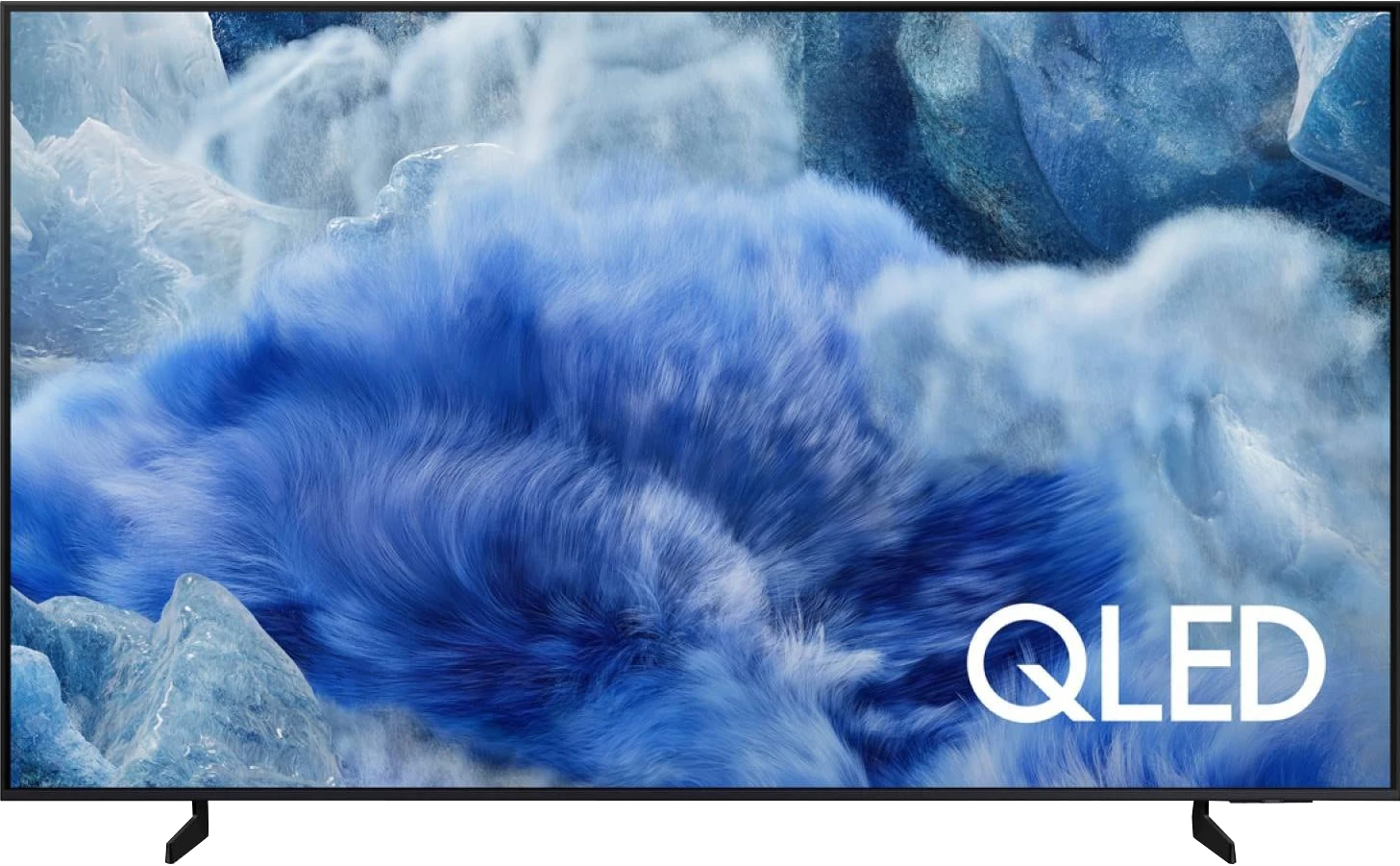
Panel type: LCD VA
Resolution: 3840x2160
System: Tizen
Model year: 2025
Complete the survey to find out the result

Panel type: LCD VA
Resolution: 3840x2160
System: Tizen
Model year: 2025
Complete the survey to find out the result

Overall rating
7.0
6.3
Movies and series in UHD quality
6.8
6.3
Classic TV, YouTube
6.5
6.0
Sports broadcasts (TV and apps)
6.4
5.6
Gaming on console
8.4
7.0
TV as a computer monitor
8.2
6.0
Watching in bright light
6.3
5.6
Utility functions
7.2
7.3
Apps
8.7
8.7
Sound quality
6.0
6.0
Complete the survey to find out what fits your preferences
Advantages
Matte panel effectively reduces reflections
Screen customisation option with interchangeable frames + art mode
Free add-ons including wall mount + OneConnect module
High native contrast
Good brightness
High refresh rate - 120/144Hz
Plenty of features for gamers - VRR, ALLM, Gamebar, proprietary motion smoother functioning in games
Solid contrast thanks to the VA panel
Pretty good brightness in SDR and HDR (up to about 500 nits)
Satin finish does well with reflections
Tizen operating system – fast, intuitive, with a rich app selection
Solar remote with USB-C charging
Integration with the SmartThings ecosystem
Great input lag
Good font readability when working with a PC, suitable as a text work monitor
Adjustable stand on multiple planes
Disadvantages
No HGiG mode – makes precise HDR settings on the console difficult.
No DTS support – requires additional equipment for some films on Bluray discs.
Paid picture mode
Severely limited features for gamers (no VRR in practice, no HGiG)*,
No USB recording or PiP functionality
Average digital image processing
*We hope that the promises on the promotional brochures will be quickly fulfilled through software updates.
Our verdict
Samsung Q8F is quite a successful continuation of the Q67D model. It offers similar image quality in HDR content, and with a brightness of around 500 nits, it creates an effect that is hard to call ordinary. The support for the HDR10+ format also helps, which has been competing with Dolby Vision for some time and provides comparable experiences in many productions. The contrast is another plus – for a VA panel, it holds up well and allows for enjoyable blacks in movies and series. However, the biggest asset of the Q8F remains its operating system. Tizen runs quickly, provides access to many applications, and works well with the SmartThings ecosystem, so the TV can easily be integrated into a larger network of home devices. Interestingly, the Q8F also has a niche use – thanks to very good font readability, it works excellently as a screen for text work. Additionally, the adjustable stand allows the TV to be placed on virtually any desk or in a narrower TV cabinet. The biggest drawback, in our opinion, is not the image quality itself – as it's hard to expect miracles in this price class – but rather what has happened to the features for gamers. Due to updates, options such as VRR and HGiG, which were available even in simpler constructions in previous generations, have disappeared. In fact, the manufacturer even boasts about the availability of these features in their catalogue. This makes it hard to recommend the Q8F to anyone planning to connect a console and counting on full support for new technologies. Therefore, the Q8F is a TV that can appeal – primarily due to its design, above-average image quality, and efficient Tizen system. But at the same time, a step backward compared to its predecessor is evident. Let's hope Samsung can quickly rectify these shortcomings, as otherwise, even such a successful “everyday” TV may leave some users feeling unsatisfied.
TV appearance





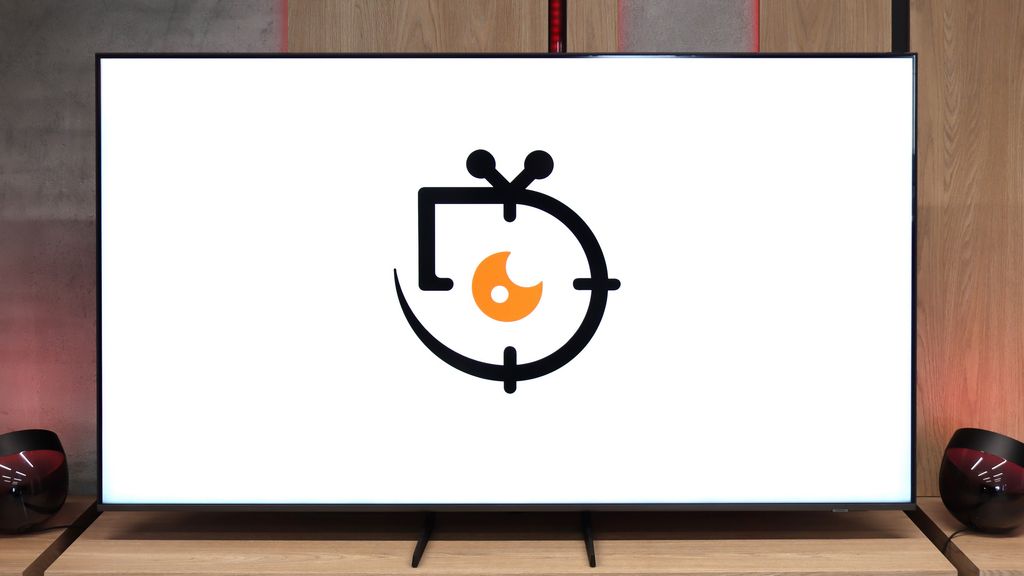
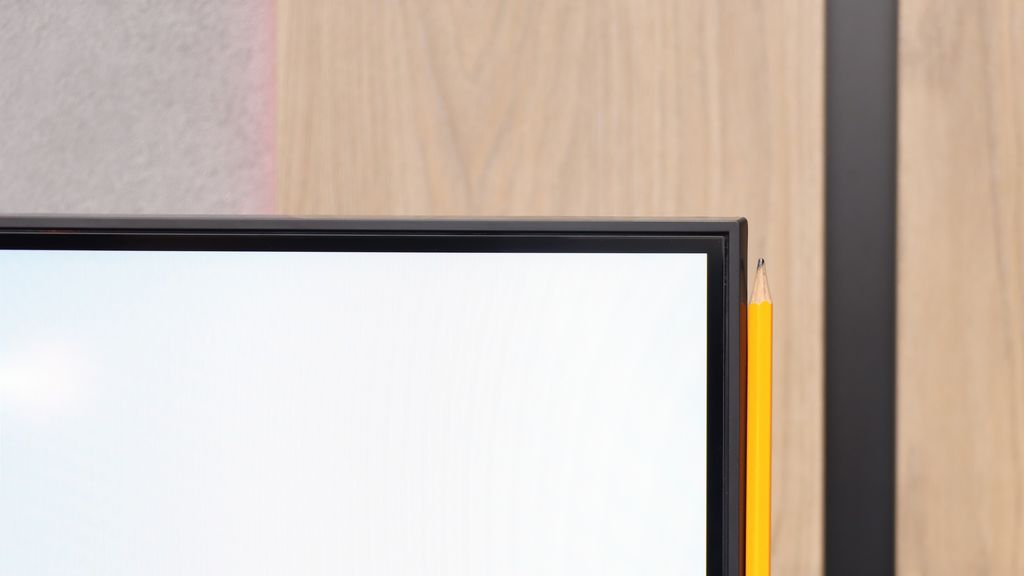
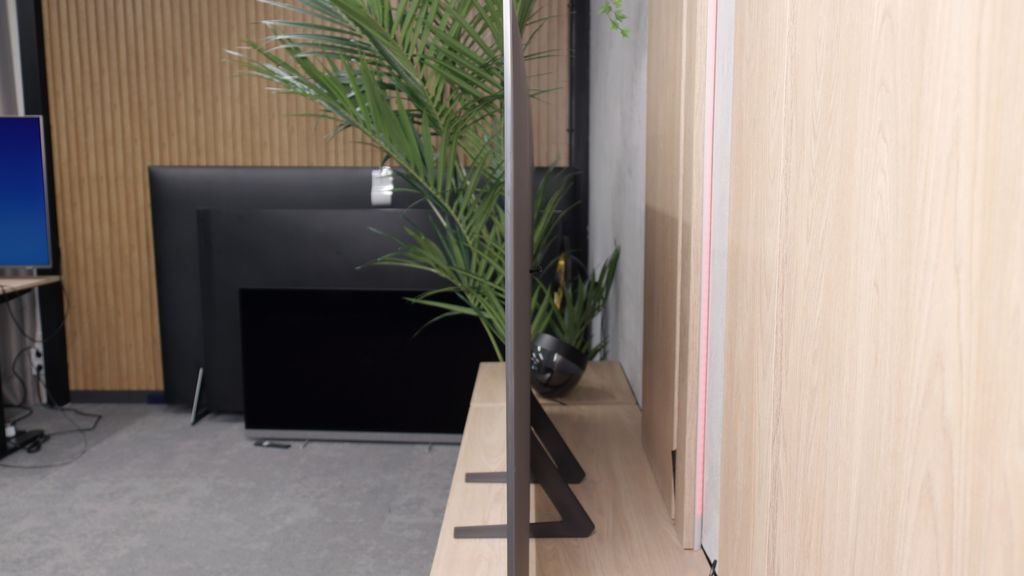
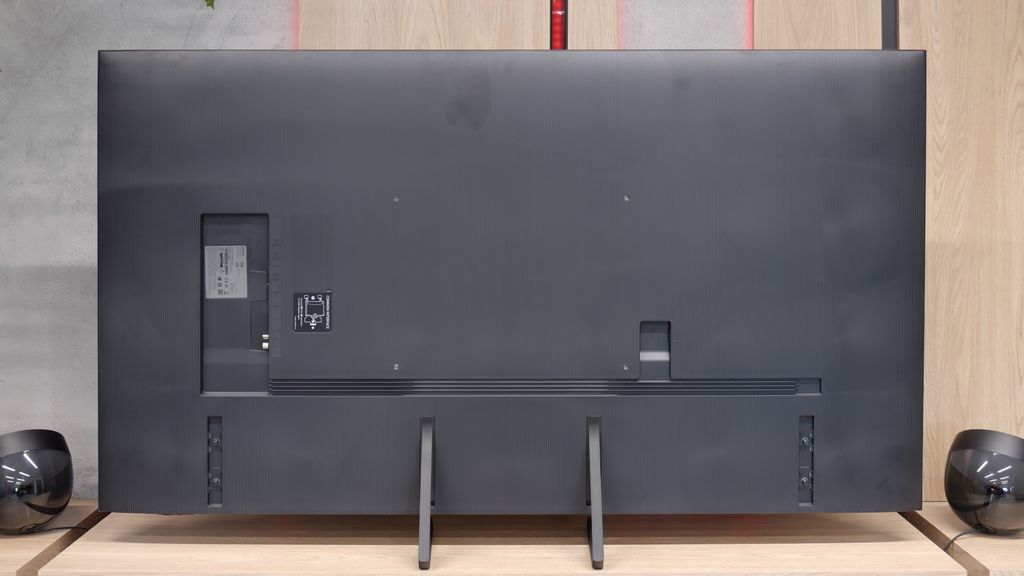
Contrast and black detail
6/10
5.5/10
Local dimming function: No
Local dimming function: No
Contrast:

Result
4,800:1

Result
4,750:1

Result
14,900:1

Result
4,500:1

Result
4,300:1

Result
5,200:1

Result
4,650:1

Result
3,650:1

Result
4,100:1

Result
4,150:1
Halo effect and black detail visibility:

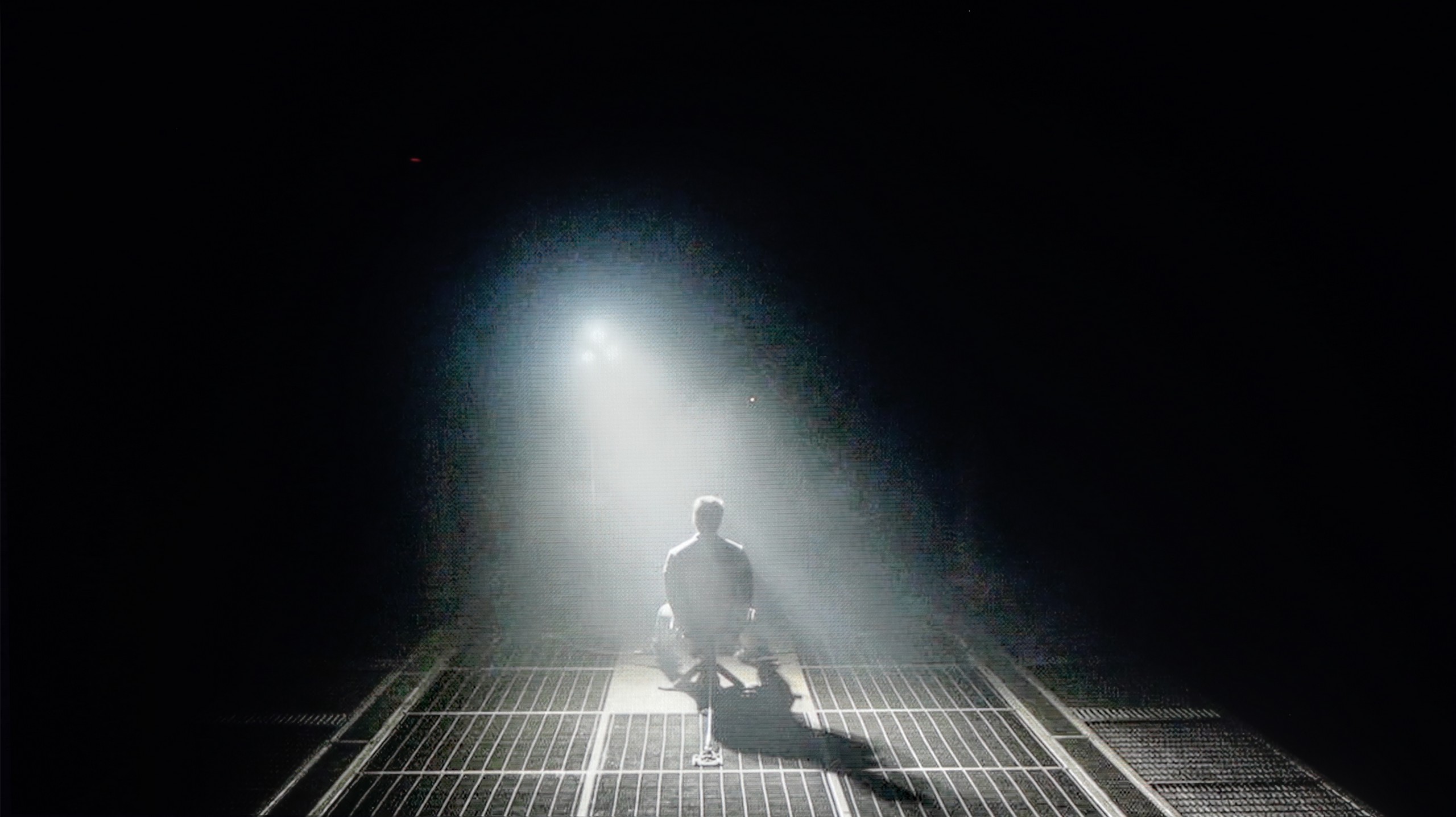
The year 2025 is shaping up to be quite interesting when it comes to lifestyle televisions. Why? Because Samsung has prepared two versions of the iconic model The Frame – one standard and the other with the addition of "Pro". In this review, we take a look at the version without "Pro", which – as we will soon see – makes a significant difference. The standard model LS03F lacks any local dimming technology, unlike its more expensive sibling. This is important as it affects not only the overall picture quality but primarily how this television handles black levels.
The VA panel used in The Frame 2025 has a high native contrast – and this obviously works in its favour. In the tested movie scenes, details in the dark areas of the image were well visible, nothing blended together, and there was no uniform black/light blob. For the average viewer, this will be perfectly sufficient. But of course, not everything is ideal. The lack of local dimming means that the black levels on this television are not perfectly deep – they resemble a dark navy blue rather than pitch black. Additionally, in our tested unit, we noticed slight blooming on the right side of the screen, but this may simply be the "character" of the unit rather than a rule. Theoretically, one could try to improve the perception of black by backlighting the screen – for example, with an LED strip – but in the case of The Frame, that’s rather impossible, as this television is meant to sit flush against the wall like a piece of art. So to achieve better blacks visible to our eyes, we are forced to watch LS03F with the lights on. Such is the charm of this technology.
Samsung Q8F uses a VA LCD panel, which immediately puts it in a good position regarding contrast. By nature, such panels offer deeper blacks than IPS panels, and you can actually see this effect here. On test patterns, the contrast ranged from about 4000:1 to even 6000:1, which practically results in a surprisingly engaging image, especially in a slightly dimmed living room. Of course, this is not the level of LCD screens with local dimming, let alone OLED — sometimes the blacks can verge on a shade of navy, and the overall image can appear flat. However, Samsung employs a simple trick: so-called global dimming, which dims the entire screen when there are many dark sections. The effect can be impressive, but it comes at the cost of losing some details, which may not appeal to everyone. Nevertheless, the Q8F still performs significantly better than televisions with IPS panels, offering solid contrast and blacks that can immerse you in the cinematic atmosphere.
HDR effect quality
6/10
5.2/10
Luminance measurements in HDR:

Result
642 nit

Result
589 nit

Result
574 nit

Result
584 nit

Result
631 nit

Result
473 nit

Result
417 nit

Result
457 nit

Result
210 nit

Result
471 nit
Scene from the movie “Pan” (about 2800 nits)


Scene from the movie “Billy Lynn” (about 1100 nits)


Static HDR10


Dynamic: HDR10+
Dynamic: HDR10+


HDR luminance chart:
Samsung Q8F
HDR luminance
Samsung The Frame 2025 (LS03F)
HDR luminance
The Frame LS03F is a television that can surprise with its brightness. The maximum luminance reaches around 650 nits, which already looks solid on paper. But as we know – lab tests are one thing, and real film scenes are quite another story. When watching HDR materials in natural conditions, The Frame 2025 maintains very good results. In most film scenes, peak brightness stayed at around 550–650 nits. This is enough to feel the difference between standard picture and that in HDR quality – bright highlights, reflections on water, or moonlight look distinct and impressive.
It's also worth noting that the LS03F is a QLED television, which translates to solid colour saturation. The coverage of the DCI-P3 colour space reaches about 92%, allowing for vibrant, intense colours in HDR content. It's not at the level of top premium models, but for a lifestyle screen – the result truly deserves recognition.
In terms of brightness, the Samsung Q8F performs surprisingly well for a TV without local dimming. It measures up to 500 nits, which in practice means that most movie and series scenes look pleasant, and it cannot be faulted for lacking the "HDR effect." In films like Life of Pi or The Meg, the screen can burst with bright light, delivering a level of lighting effect that is satisfying. It struggles more in challenging moments—such as dark scenes with single bright points. The global dimming used causes the TV to darken the image to maintain deep blacks, but at the expense of detail brightness. This is clearly visible in the scene from Sicario 2, where the brightness of the helicopter lights dropped to around 200 nits. This is a deliberate design choice that gives the impression of deeper blacks but takes some shine away from individual elements, and one should simply keep that in mind. Regarding colour reproduction, the Q8F uses quantum dot technology, which expands the colour gamut. A coverage of the DCI-P3 palette at 91% can be considered a decent result, although it is not a record-breaking figure compared to other QLEDs.
Factory color reproduction
7.1/10
4.6/10


Factory Mode
After calibration
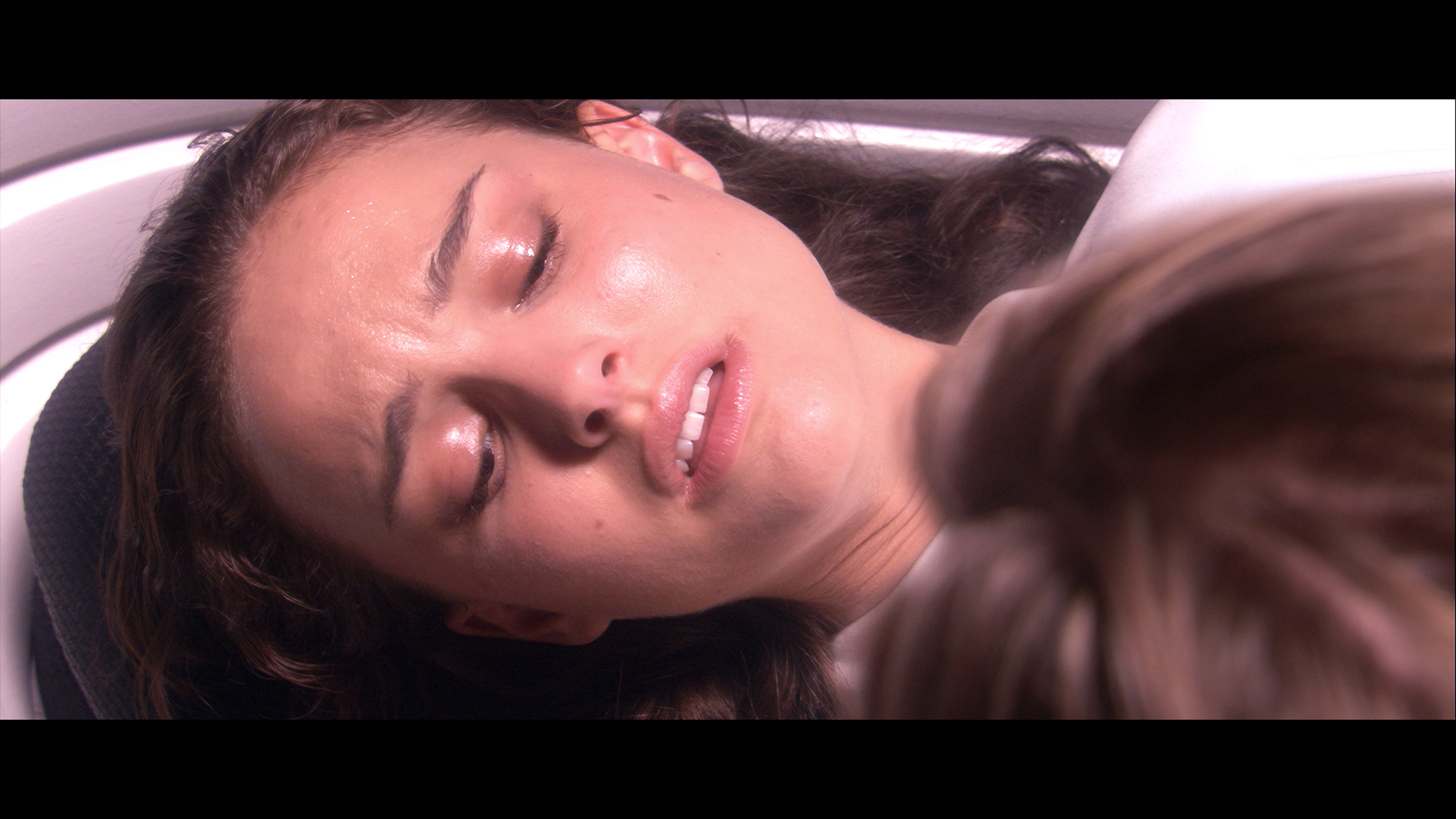
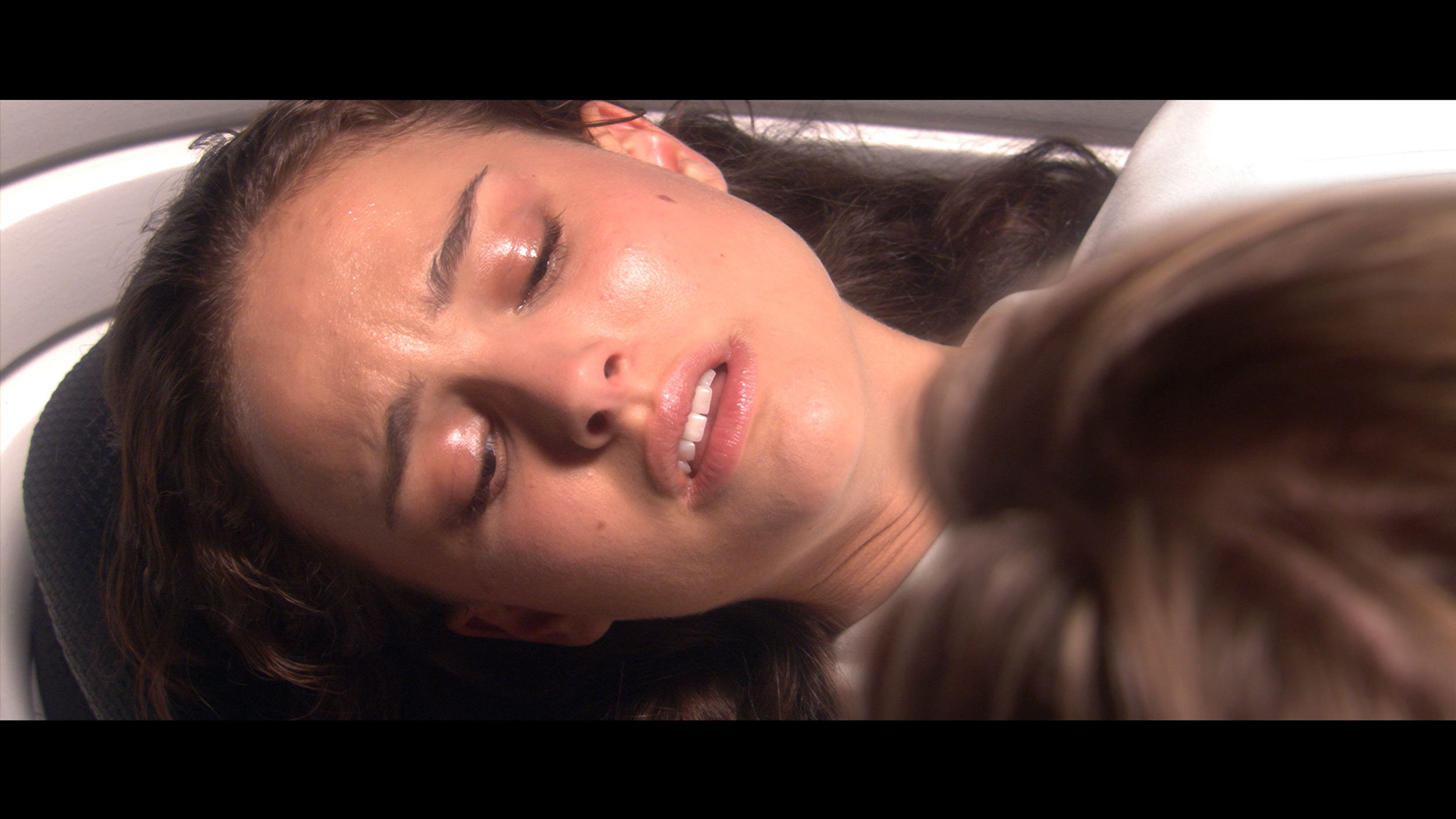
Factory Mode
After calibration
When it comes to picture quality right out of the box, even in Filmmaker mode, which is supposed to be the closest to reference, there were some issues. In both HD and 4K HDR content, we noticed clear deviations in white balance. The picture was heavily skewed towards red and blue, giving the screen a distinctive pinkish hue. This effect was most noticeable in bright scenes – for example, in shots with a lot of white, where neutral light should naturally dominate. In such moments, the screen clearly took on pink tones, which is also evident in the attached comparative photo. As for brightness characteristics – it wasn't as bad as one might expect given such colour inaccuracies. Analysis of the gamma curve and EOTF showed a slight brightening of the image compared to the reference, but not enough to drastically spoil the viewing experience.
We decided to check out the Filmmaker mode because right out of the box it gave us the best picture. However, that doesn't mean it was perfect. The white balance had too much of a blue and red tint, causing the whites to lean towards a slight purple-pink hue. Such imbalance affected the visibility of virtually all colours, which is clearly seen in the comparison photo below. The brightness characteristics in SDR content were quite well calibrated, although in HDR materials we noticed that the TV didn't always handle its global dimming well — at times the screen was too dim, while at other times it could suddenly brighten up. Fortunately, issues related to colours can be effectively corrected with calibration tools, so we decided to get to work.
Color reproduction after calibration
8/10
7.8/10




After calibration, the movie mode gained a completely new quality. The issue of the pink tint, which was previously clearly visible, especially in bright scenes, has been effectively eliminated. Colours started to look significantly more natural, and the white balance no longer dominated the rest of the image. It was no longer the same oversaturated "picture from a box" – everything took on coherence and a cinematic character. Additionally, the tendency of the TV to slightly brighten scenes, previously visible in the EOTF curve analysis, has been partially corrected. Of course, within the limits of what the design allows without local dimming – it's difficult to speak of perfect brightness management here. Nevertheless, the final effect was definitely closer to what one might expect from a mode named Filmmaker.
After calibration, we managed to correct the white balance to almost perfection. Older SDR content looks fantastic — most errors are within a value of 2, which is definitely below the threshold of human perceptibility. In HDR, we also brought the white balance to an acceptable level, but a different problem arises here. So why are there still relatively large errors in colour reproduction? This is mainly due to the limited colour palette and the way the television manages brightness. The global dimming technique used does not give the user control in the settings, so analysing the EOTF curve in HDR films, it's clear that the Q8F can modify luminance on its own. This can be seen as a limitation, but still, the image after calibration is much more enjoyable to watch than in the factory version.
Smoothness of tonal transitions
9/10
9/10





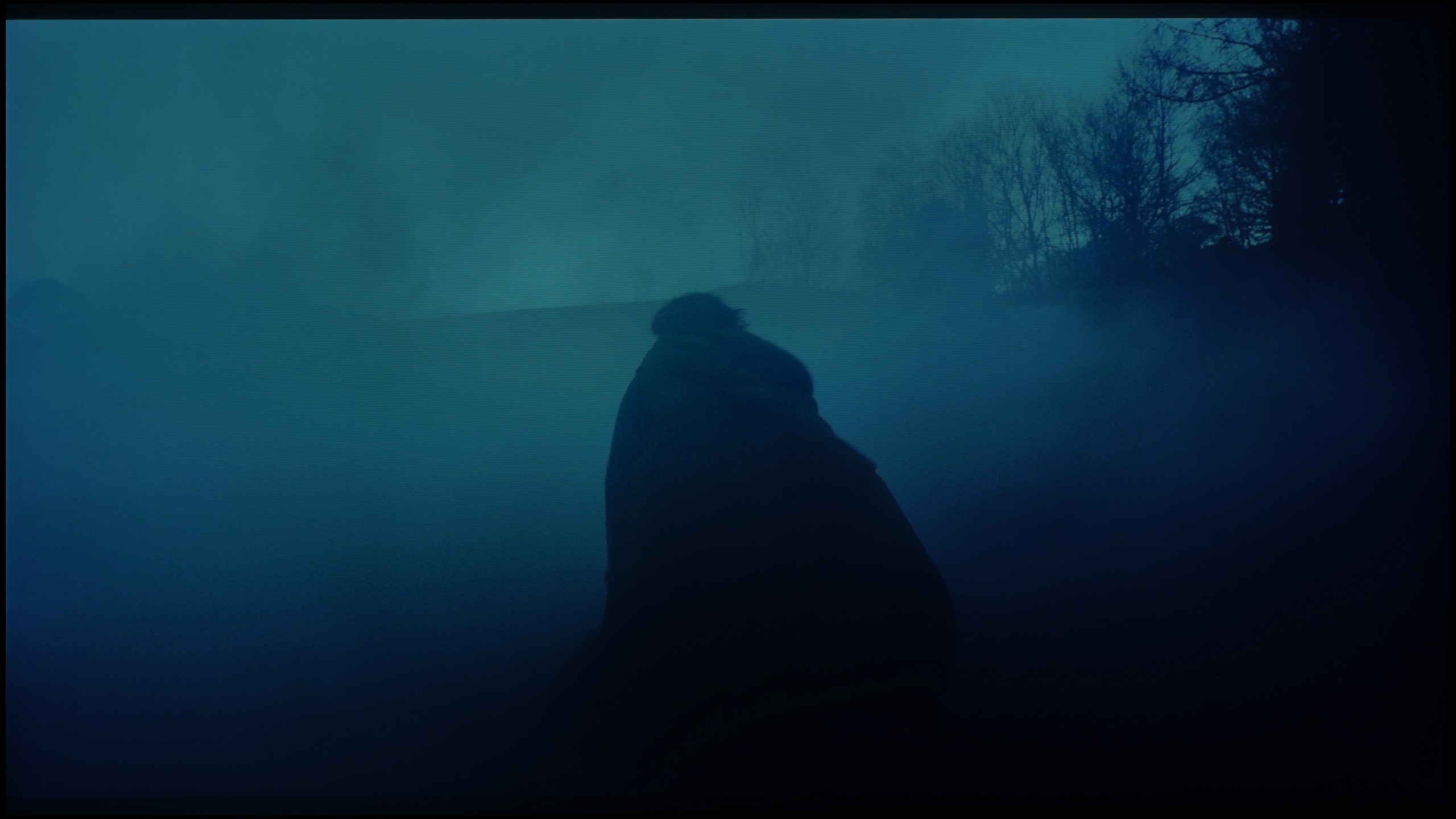






In terms of the smoothness of tonal transitions, the LS03F maintains a high standard – just like last year's models. The television didn’t have any issues during testing of more challenging film scenes, where visible transitions between shades can easily occur. The colour gradation performs very well here – both in lighter and darker parts of the image. We did not observe the typical banding effect or any other disturbances that could be noticeable while watching films. If we were to nitpick, in the most demanding scenes – with subtle transitions and delicate gradients – minor imperfections can be seen. But only if you get really close to the screen and start analysing the image from an unintended distance.
The fluidity of tonal transitions in the Q8F performs really well. The television beautifully blends colours, both in bright segments of the sky and in darker scenes, where visible "steps" in colour can easily occur. Admittedly, sporadic errors do happen, but you have to look closely to catch them. In practice, while watching movies or series, the picture looks cohesive and doesn’t get distracted by any artefacts. Therefore, the rating in this category had to be high. 😉
Image scaling and smoothness of tonal transitions
6.7/10
5/10
Smooth transition function

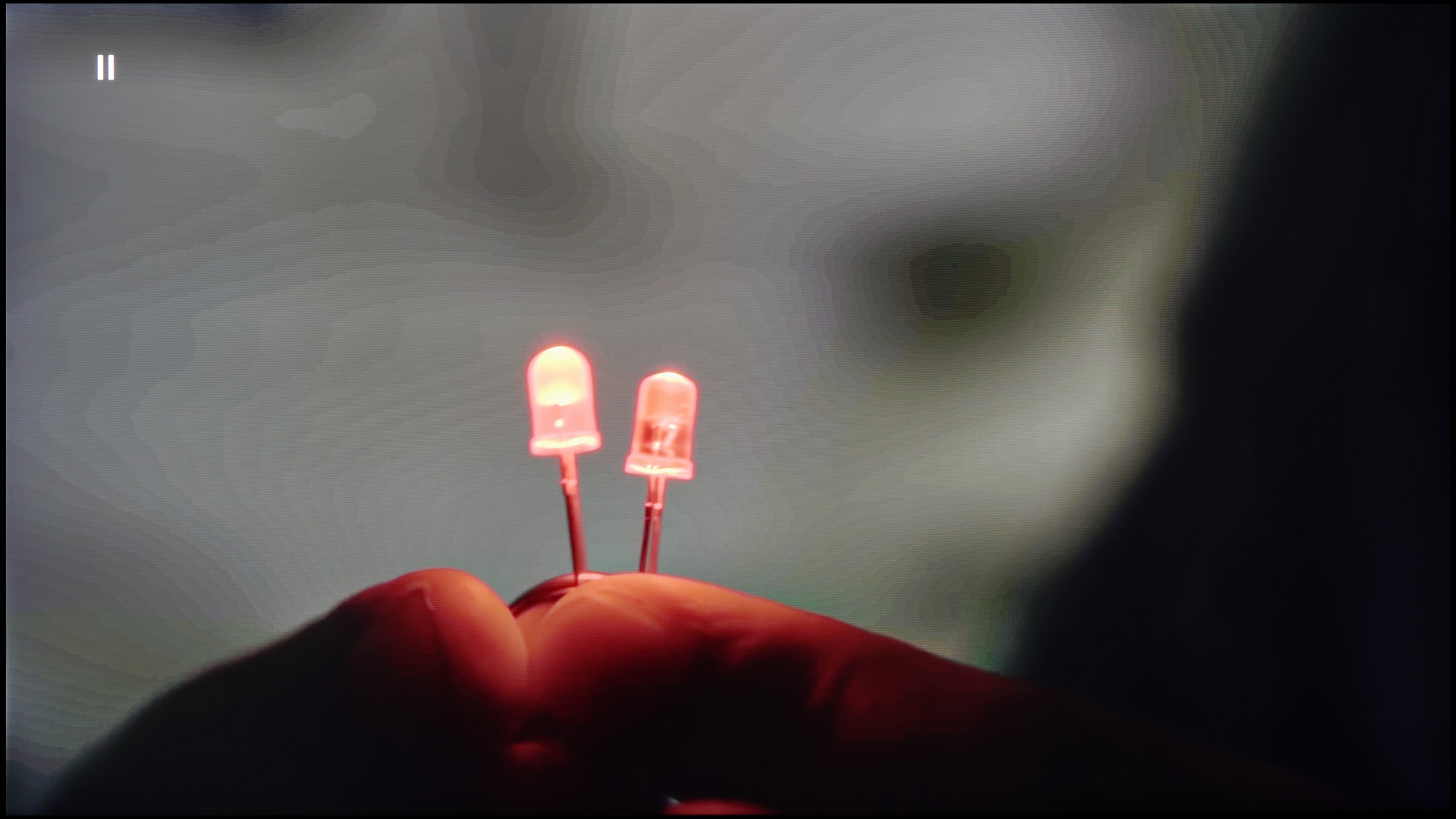
Image without overscan on the SD signal

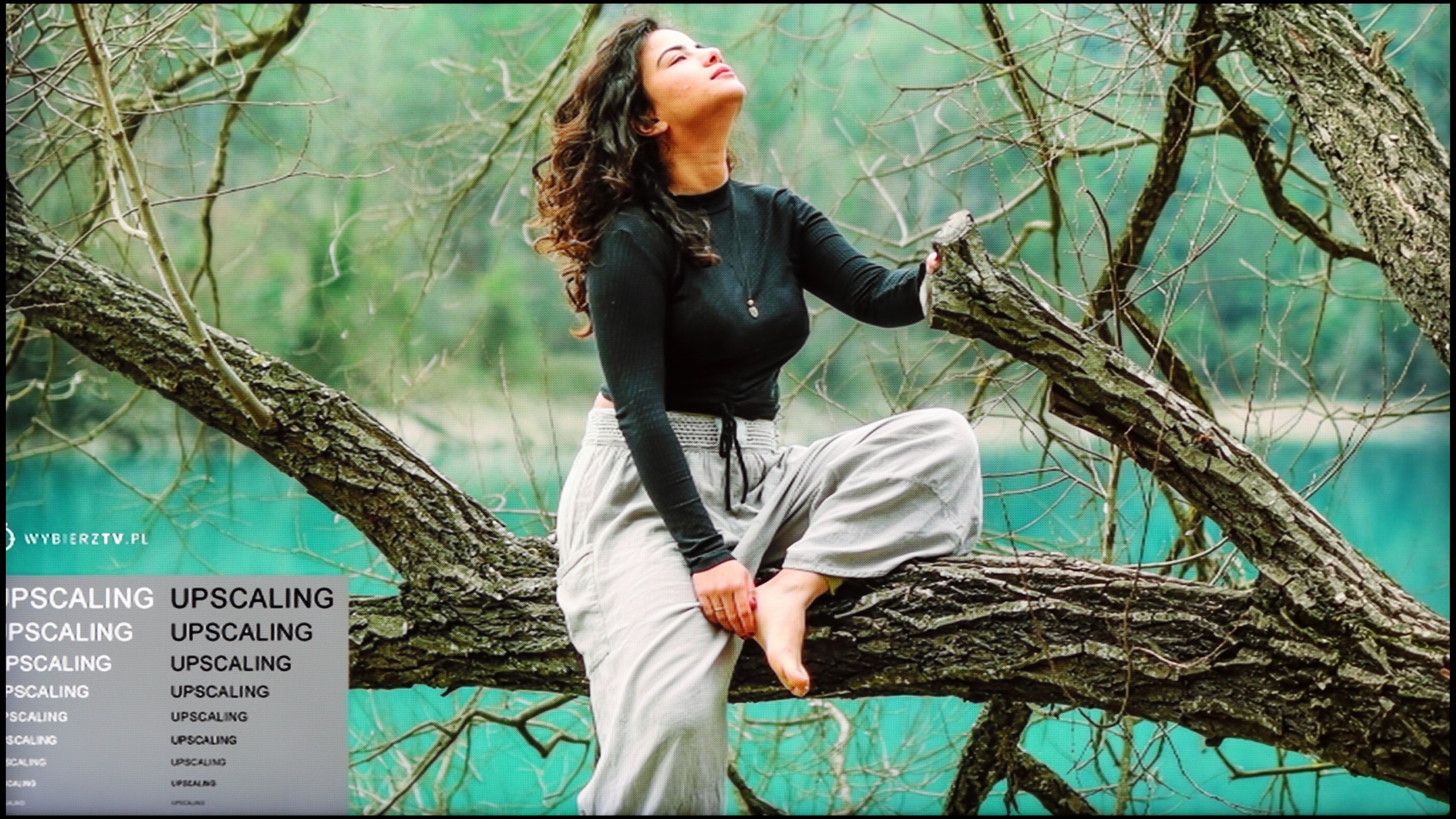
LS03F is equipped with an NQ4 processor, which is responsible for improving image quality – especially in lower-quality materials. In practice, it works surprisingly well, particularly when it comes to older content and recordings with lower resolution. Activating the "noise reduction" feature delivers noticeable results. The television effectively smooths tonal transitions and removes digital noise that can appear in darker areas of the image. Compared to previous generations, there is a clear improvement – earlier, this feature often smoothed everything too much, including details that it shouldn't have removed. In this year’s model, the smoothing still occurs, but it happens in a much more acceptable way. Textures of materials, skin, or fabric details are not as heavily muted as before – the image retains more naturalness. However, this does not change the fact that film grain is still removed by the television, which may not appeal to everyone. On the other hand, it's no longer such an aggressive intervention as in previous models. It's also worth mentioning that the LS03F may struggle with very weak signals – for example, from VHS tapes or low-resolution video. In such cases, we noticed slight clipping of the image at the edges – the so-called overscan. This can lead to situations where a small part of the image (e.g., subtitles at the bottom edge) gets cut off.
Let's see how the Q8F handles older content, which often has poor quality. Starting with the positives: the upscaling works really well. The TV performs nicely with both classic television and materials from YouTube, not giving the impression that we're dealing with something completely unattractive. It struggles more with content in very low resolutions, such as 576p — the image can be cropped, and unfortunately, the overscan phenomenon cannot be disabled. Moreover, the digital processing does not look great either. The noise reduction feature, instead of removing unwanted artefacts, smooths out almost everything: film grain (which many viewers desire) disappears along with the texture of the image, and actors' faces start to resemble characters from cheap Turkish soap operas. It's hard to consider this option useful — it's best left completely off. Perhaps Samsung will refine the function’s performance in updates, but for now, it’s difficult to view it as anything other than an unnecessary addition.
Blur and motion smoothness
6.9/10
5.7/10

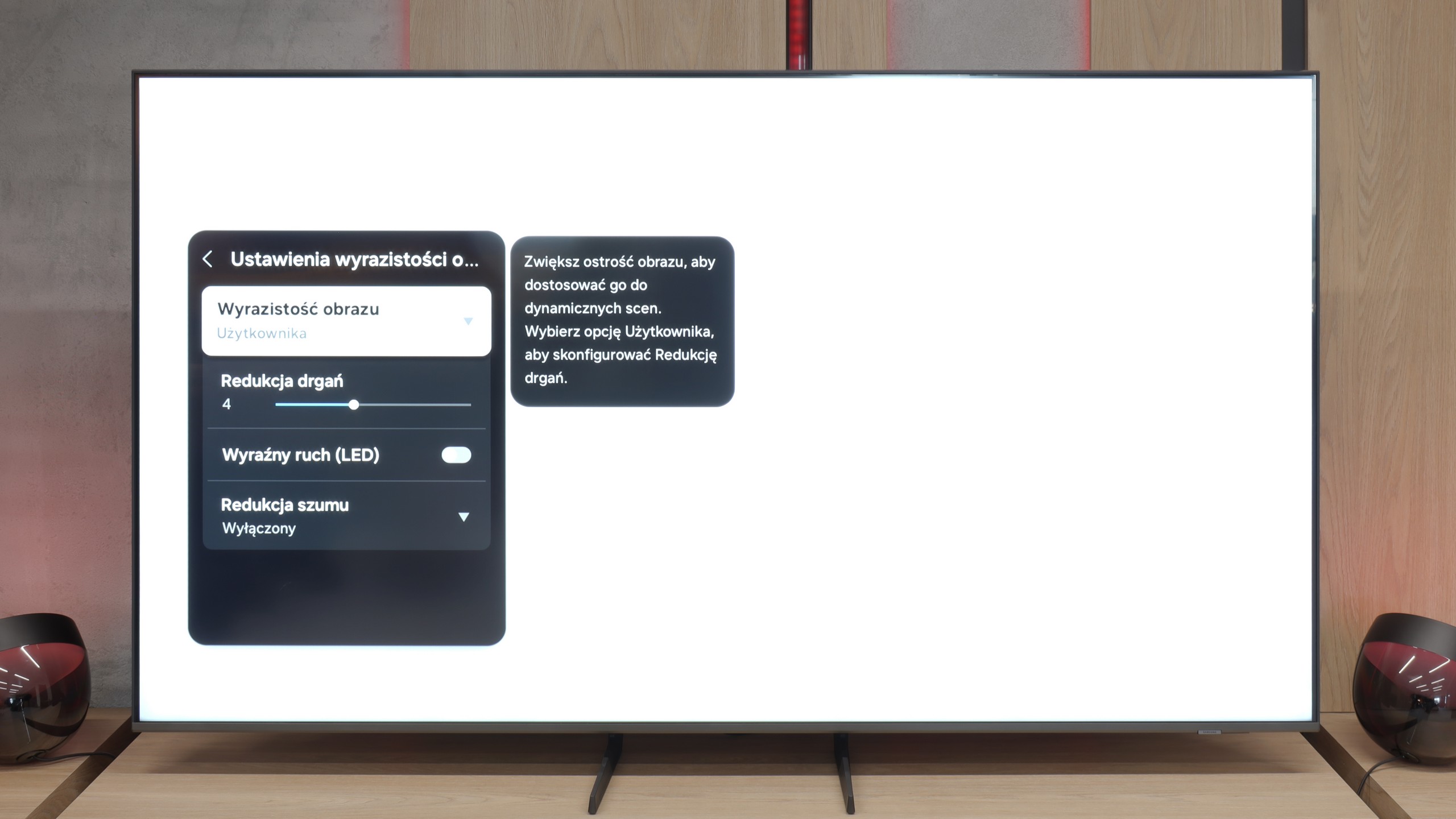
Blur (native resolution, maximum refresh rate):




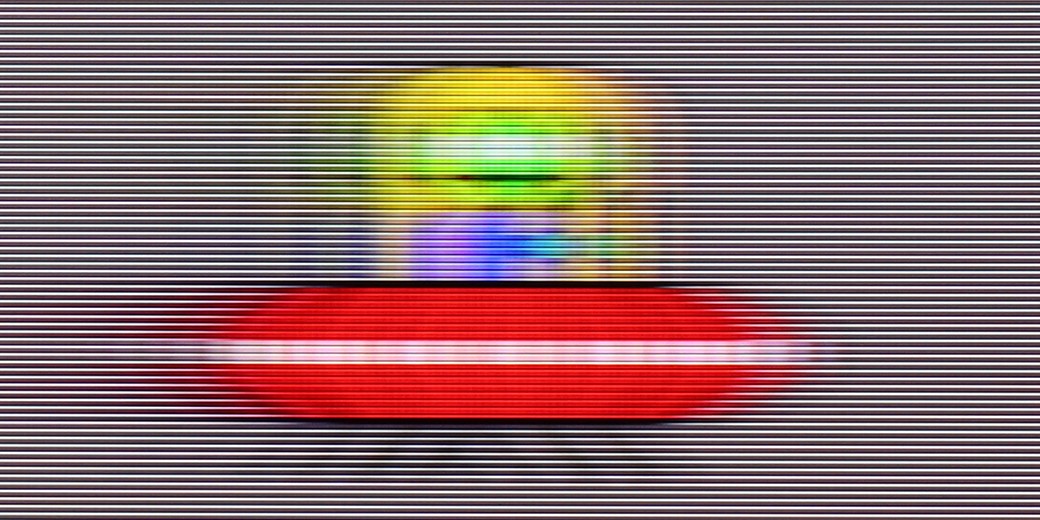

Blur (BFI function enabled):
Image flickers in this mode






The new feature in The Frame for 2025 is a 144 Hz refresh rate display. Yes – in a television primarily associated with displaying works of art, you can now not only watch Van Gogh, but also comfortably play on a console or follow fast-paced sporting events. This is a significant step towards greater versatility. In the case of Samsung movies, as usual in models with a 120 Hz display and above, it allows you to adjust motion fluidity according to your preferences. You can set a more cinematic reproduction that maintains frame rate or opt for complete image smoothing. The range of options is broad, allowing you to tailor the effect to your tastes – regardless of whether the screening is meant to look like classic cinema or a performance on a modern theatre panel.
*this part of the test refers to the model LS03FAU in sizes 55 and 65 inches, which is equipped with a 144Hz display; the sizes 43 and 50 inches have 60Hz displays, and consequently perform much worse in terms of motion fluidity.
Due to the applied 60 Hz panel, it's hard to call the Q8F a television made for gaming or watching sports. The panel isn't particularly fast, making motion blur clearly visible. If you were expecting a spectacular, almost 'stadium-like' experience during broadcasts, you might feel a bit disappointed. Fortunately, for movies and series, Samsung hasn't given up on the motion smoothing function. It's nothing more than a smoother that allows for improved fluidity of productions recorded at 24 or 30 frames per second. This way, you can decide for yourself whether you prefer a more fluid, 'television-like' image or to retain the cinematic character. It all depends on the viewer's preferences, and the ability to adjust this parameter is undoubtedly a plus.
Console compatibility and gaming features
8.2/10
3.7/10
- ALLM
- VRR
- VRR range48 - 144Hz
- Dolby Vision Game Mode
- Correct implementation of HGIG
- 1080p@120Hz
- 1440p@120Hz
- 4K@120Hz
- Game bar

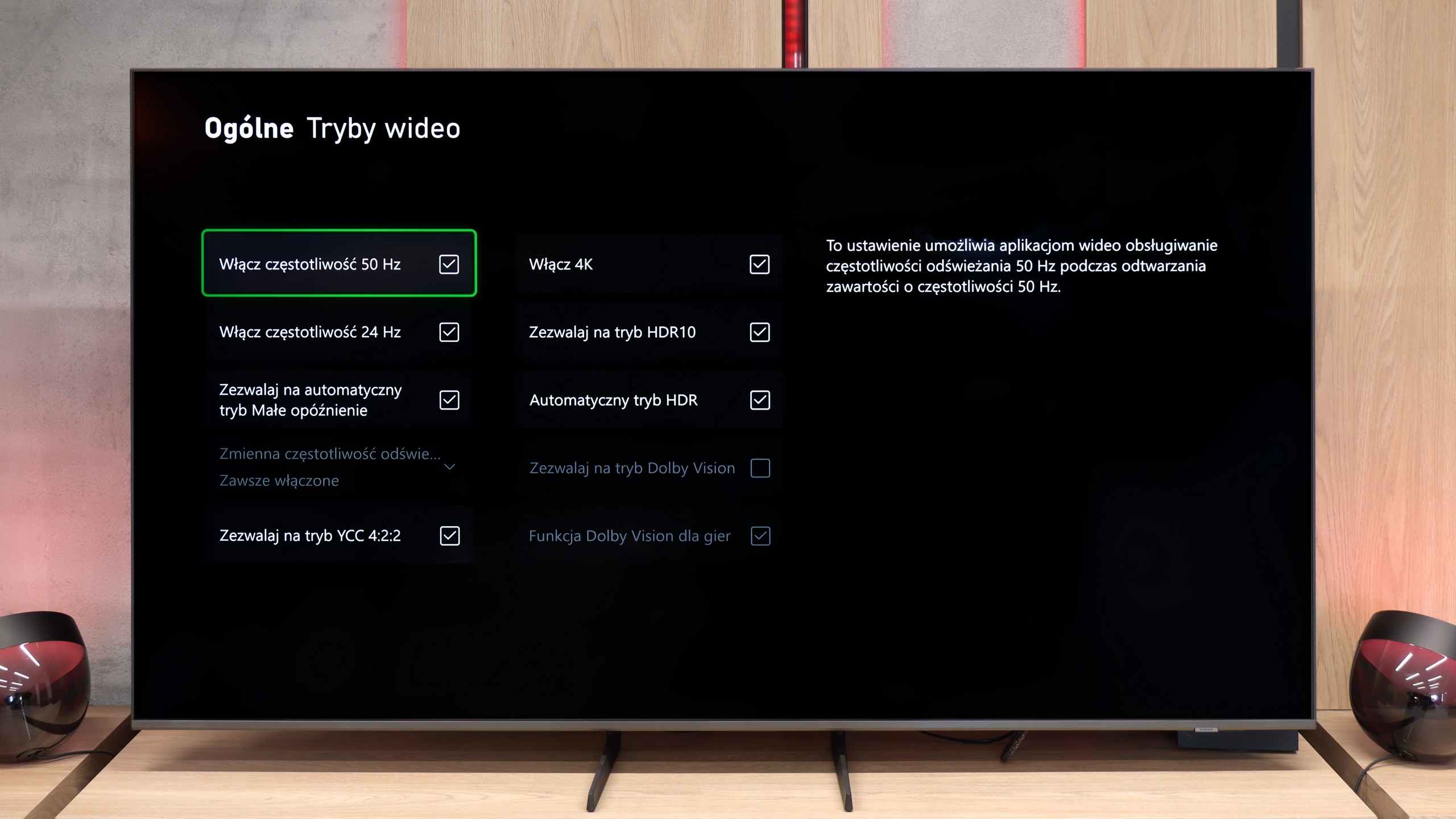

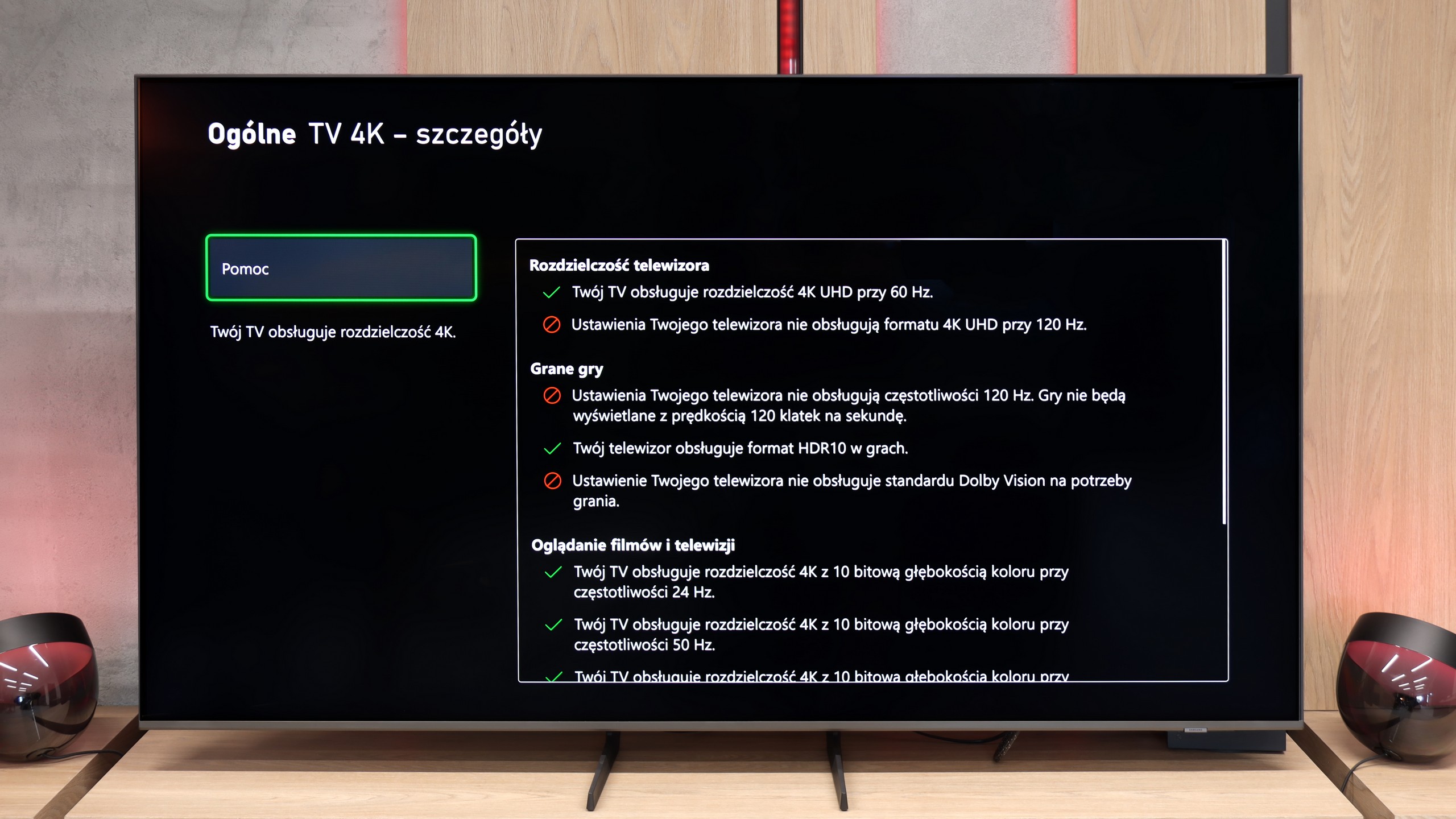

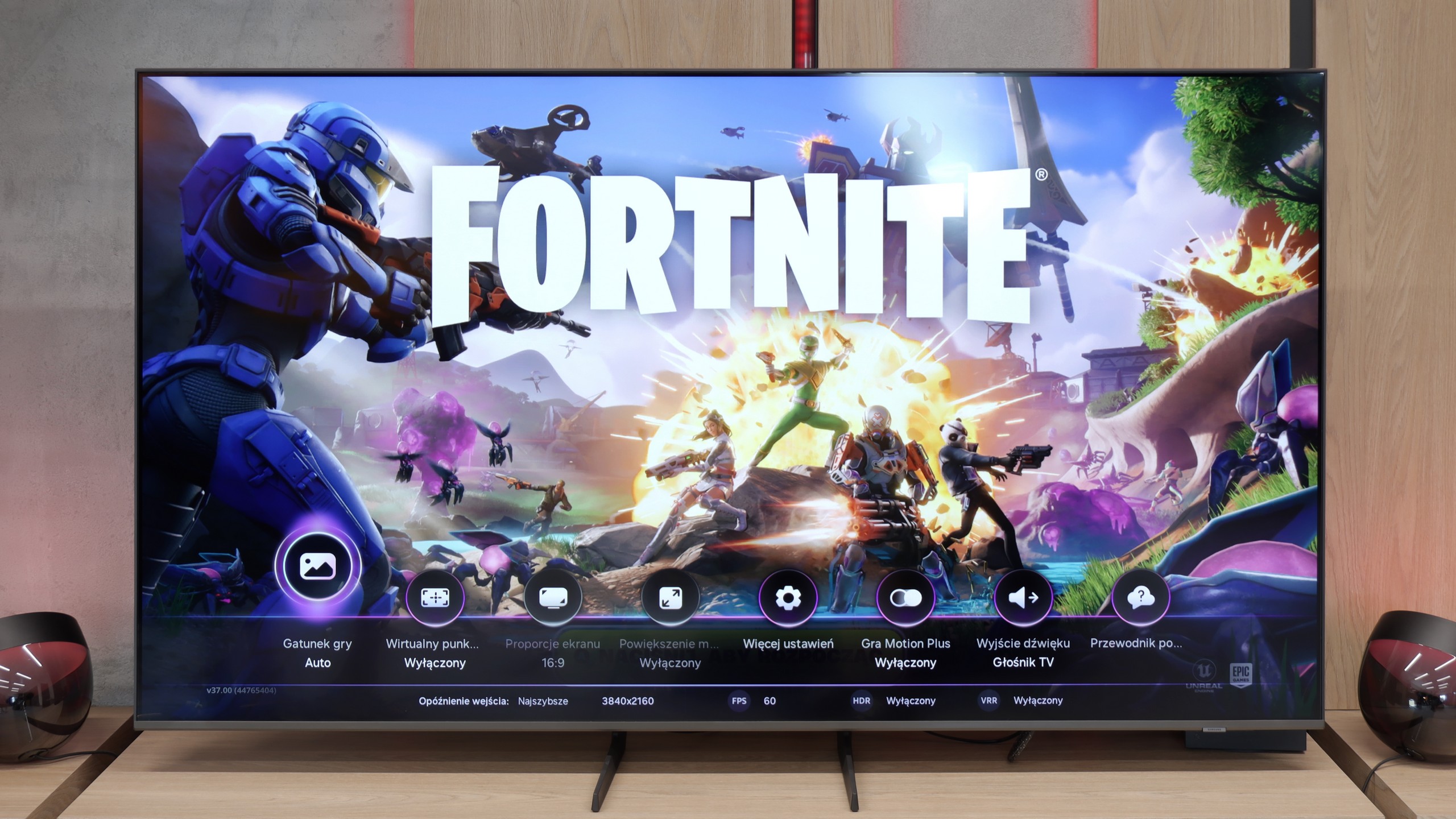

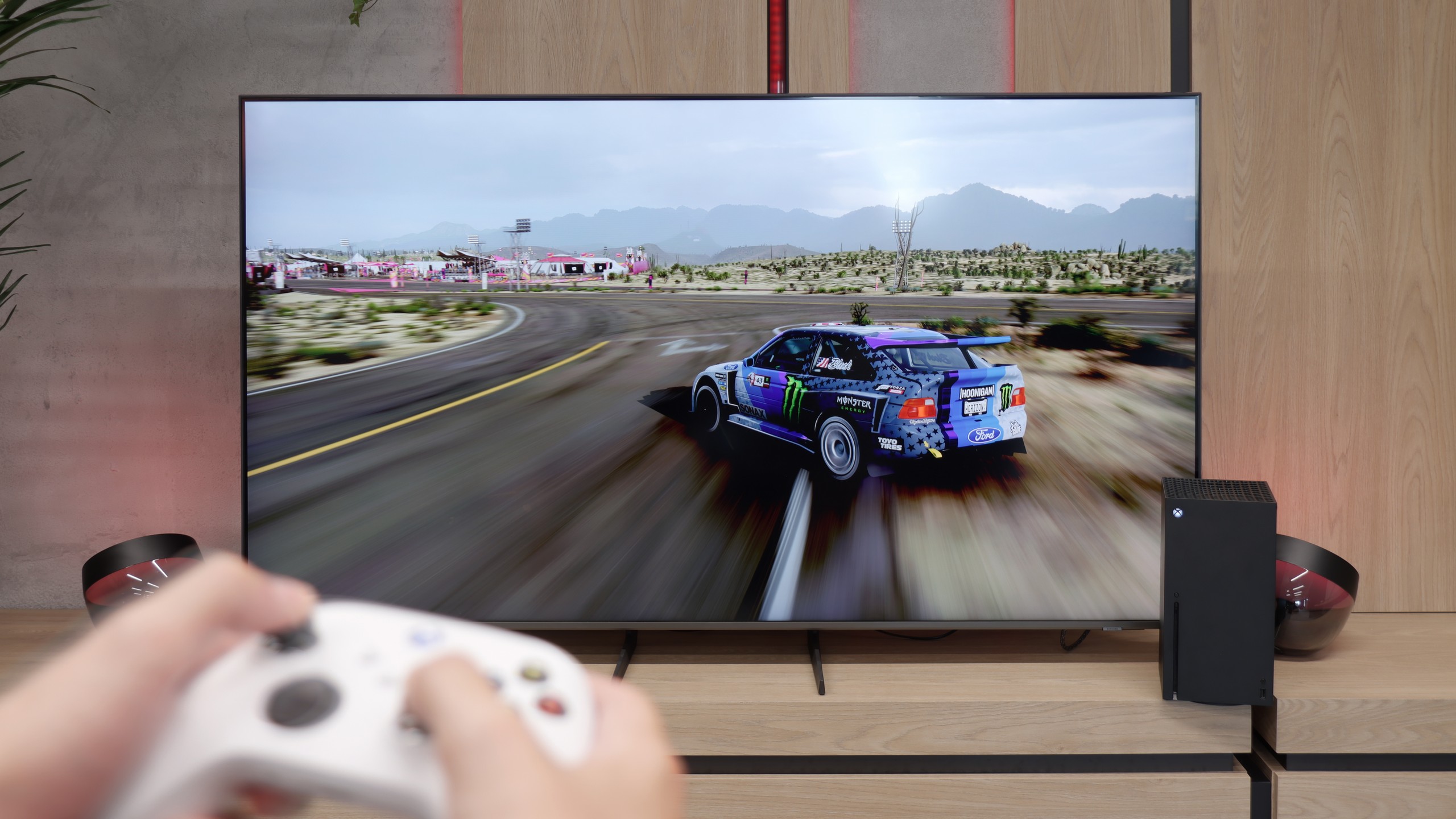
As we mentioned earlier – although The Frame likely displays images and artwork for most of the time, Samsung recognised that a Van Gogh fan could just as easily be an avid gamer. And it must be said that The Frame 2025 has almost everything to become a fully-fledged gaming TV.
Onboard, we find support for ALLM (Auto Low Latency Mode) and Variable Refresh Rate (VRR) thanks to the implementation of a single HDMI 2.1 port. The TV handles lower resolutions at higher refresh rates effortlessly and features an expanded Game Bar – already known from other Samsung models – which allows for quick preview and adjustment of key gaming-related settings. For this, it gets extra points from us. Noteworthy is also the proprietary motion smoother, Auto Motion Plus Game, which – and this is worth emphasising – works without increasing input lag. Samsung remains the only manufacturer that has managed to implement this feature in a practically unnoticeable way regarding delays. The result? Much better fluidity in games, especially those that struggle to maintain a stable 60 frames. This solution can genuinely improve gaming comfort in more demanding titles – particularly on consoles that don’t always manage full fluidity, especially in AAA games.
As for the downsides – the lack of Dolby Vision is already something we consider standard in Samsung TVs, so there’s not much to specifically nitpick here. However, the problem lies elsewhere. In the latest version of the Tizen system, the HGiG option has disappeared. Literally – it’s gone. This is a significant inconvenience when configuring the console for proper HDR content display in games. It's hard to understand why such a decision was made, but one thing is certain – this needs to be fixed as soon as possible. We’re talking about a brand that has set standards for gaming on TVs for years. If HGiG returns – and we hope it does – The Frame LS03F can confidently aspire to be a proper gaming TV. Not only as a decoration on the wall, but as equipment that truly enhances the gaming experience.
It's not entirely clear what Samsung has messed up this year with its TVs, but the Q8F isn't free from all the confusion with updates and shortcomings. While its older cousin, the Q67D, could still be recommended with a clear conscience to casual gamers, it's hard to find a reason to do so here. Aside from the automatic game mode and the attractively designed Game Bar, we get practically nothing that could appeal to gamers. The lack of proper HGiG implementation is a major issue, especially since the feature simply disappeared after the 1126 update. The situation with VRR is even worse. Even though it appears in the manufacturer's brochures and shows up in the Game Bar, we couldn't get it to work. The Xbox Series X console wouldn't allow it to be activated at all, and the option remained greyed out and inactive. It's difficult to praise such a TV even to casual gamers, which is a shame because Samsung has had a strong selling point in the gaming segment for years.
Input lag
10/10
9.9/10
SDR
HDR
Dolby Vision
When it comes to input lag, Samsung maintains a very high standard. The LS03F, like most of this year's models from the brand, achieves a score of 8 ms for 4K content, which is practically a benchmark value. This result allows you to play even the most dynamic titles without delays and with complete responsiveness. Well done!
Fortunately, when it comes to gaming, Samsung didn't try to "improve" anything and the input lag remained at an excellent level. Results hovering around 10–15 ms mean that the delays are practically unnoticeable. The controls are instant, and the responses from the console or computer appear on the screen without any noticeable delay. In this regard, the Q8F performs exceptionally well and it's hard to fault it.
Compatibility with PC
8.2/10
6/10

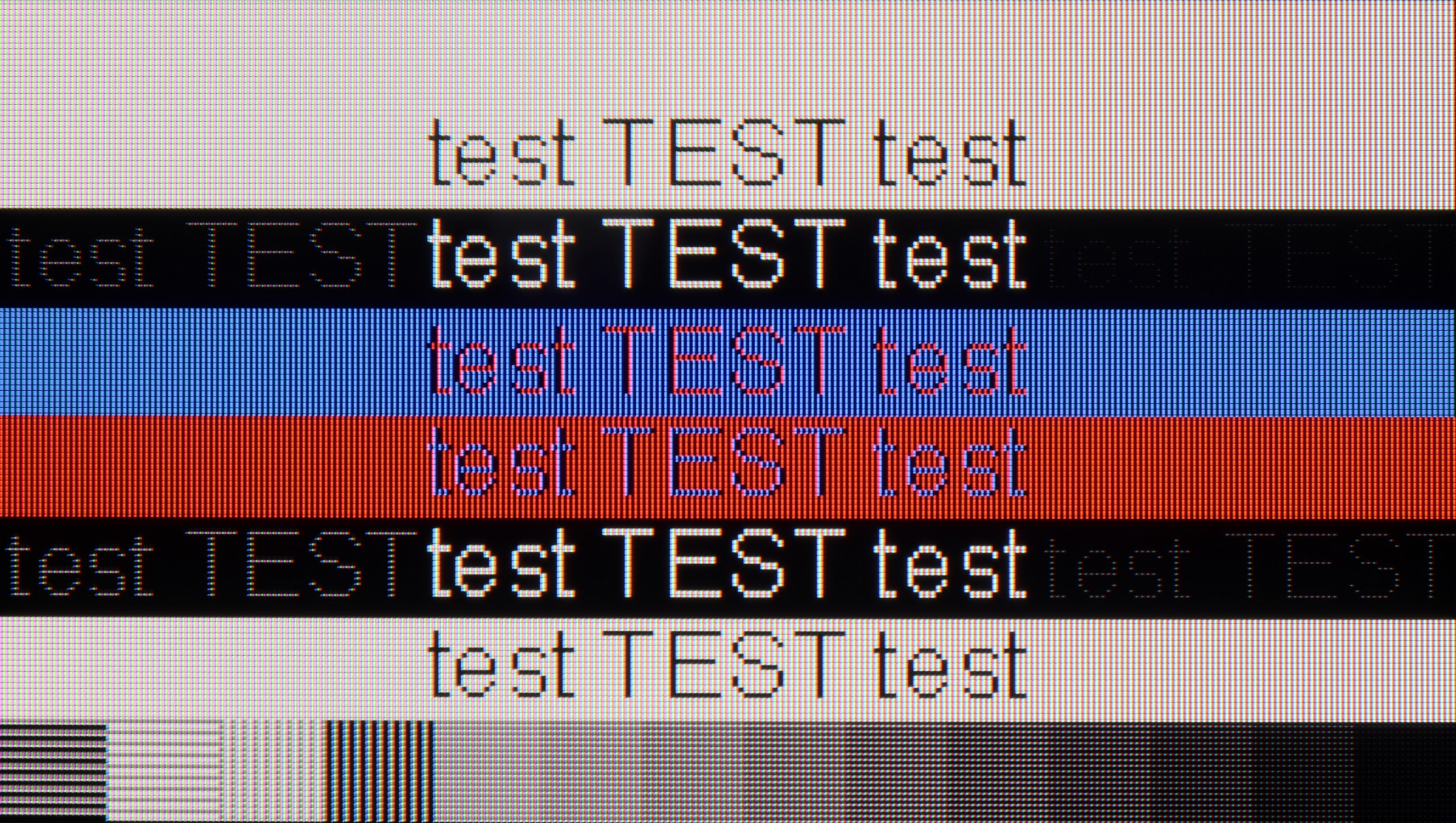
Collaboration of The Frame 2025 with a computer poses no major issues. Let's start with gaming, as this is where this model shows its strengths – support for 144 Hz signal, low input lag, and compatibility with G-Sync technology (for NVIDIA cards) make it hard not to consider it a full-fledged gaming monitor. It’s one of the more interesting "gaming with PC" televisions available on the market in this class.
When it comes to everyday work, the situation looks just as good. The Frame easily handles chroma 4:4:4, which translates to good font readability and overall user comfort. We only noticed slight issues with dimming very thin lines and dark details on a light background – this effect may occur, particularly when working with small interface elements. In practice, however, with a 55-inch screen and standard office working distances, it will be hard to realistically notice this problem. Nonetheless, it's worth keeping this in mind if the television is to serve as a monitor not only for entertainment but also for precise graphic or text work.
While playing on the Q8F isn't exactly the most attractive option—it's lacking modes with lower resolution and higher refresh rates, plus there are issues with VRR (G-Sync) and the panel is limited to 60 Hz—it performs excellently as a monitor for work. Font readability is at a very high level, so working with text or spreadsheets in Excel is a pure pleasure. In this regard, the Q8F could be a viable alternative to a large office monitor.
Viewing angles
3.5/10
3.4/10
As one could expect from a VA panel, the viewing angles on The Frame 2025 are at best mediocre. The image loses saturation and contrast when viewed off-axis. It's a shame, because we're talking about a model that displays digital artworks in standby mode – and it's precisely in such moments that wide viewing angles would make the most sense, enhancing the feeling of interacting with a real piece of art rather than just its screen imitation.
Perhaps in the future, manufacturers will decide to introduce special coatings or modified versions of VA panels that improve this aspect – as it would have real significance not only in terms of functionality but also aesthetics for lifestyle televisions.
The viewing angles on the Q8F can be described as average, resulting from the applied VA matrix. Watching the television head-on, the picture looks very good, but just shifting slightly to the side causes it to start fading and losing contrast. Colours gradually lose their saturation, and black takes on a greyish hue. This is a typical limitation of this type of panel, and it’s hard to expect miracles here. Compared to IPS matrices, the difference is clear — while these have weaker contrast, they hold colour better at an angle. The Q8F is best suited for a classic setup, where viewers sit centrally in front of the screen. If you’re planning screenings with a larger group, with people spread wider across the living room, the effect may not be as satisfying.
TV efficiency during daytime
6.3/10
5.6/10

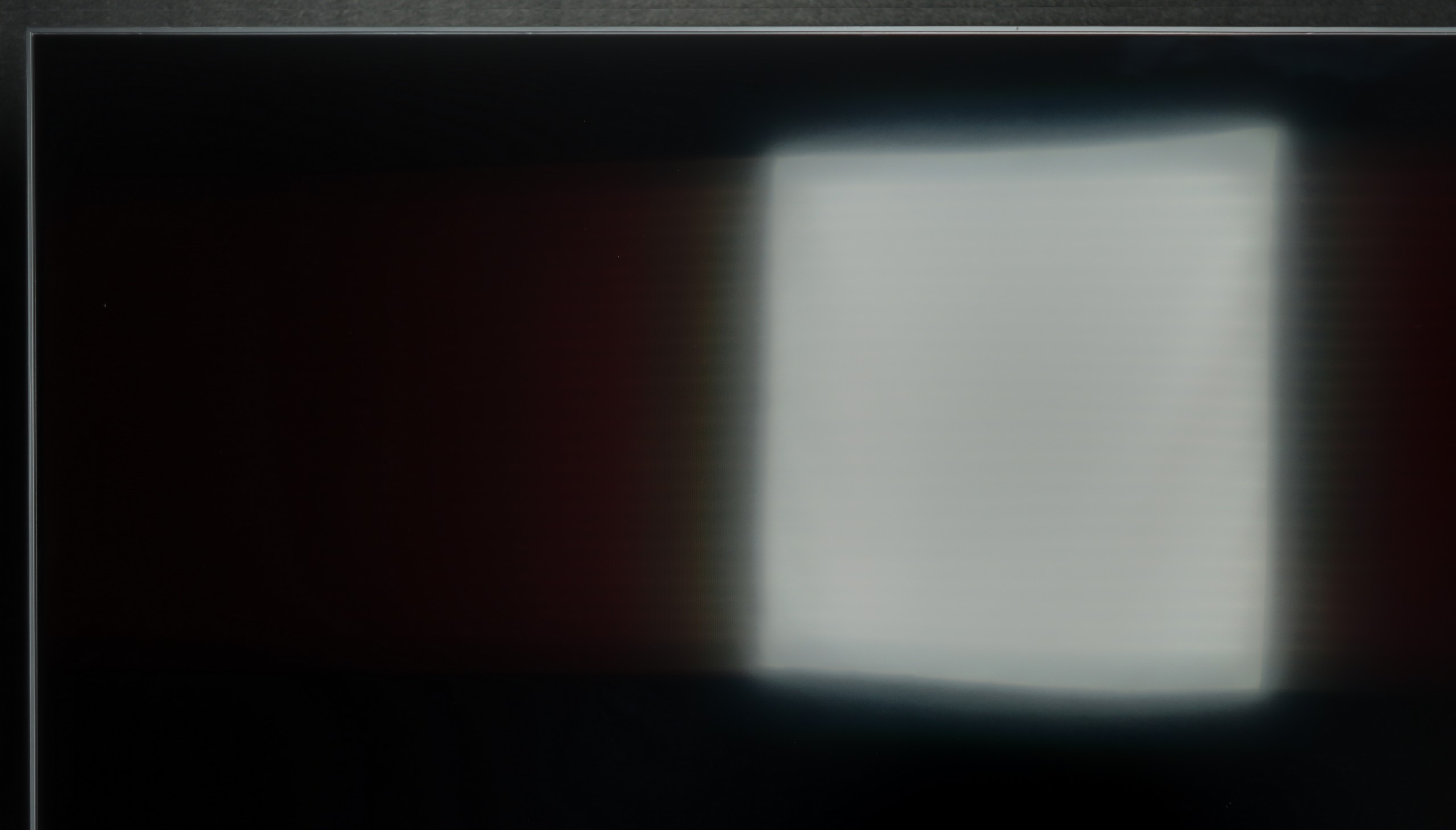

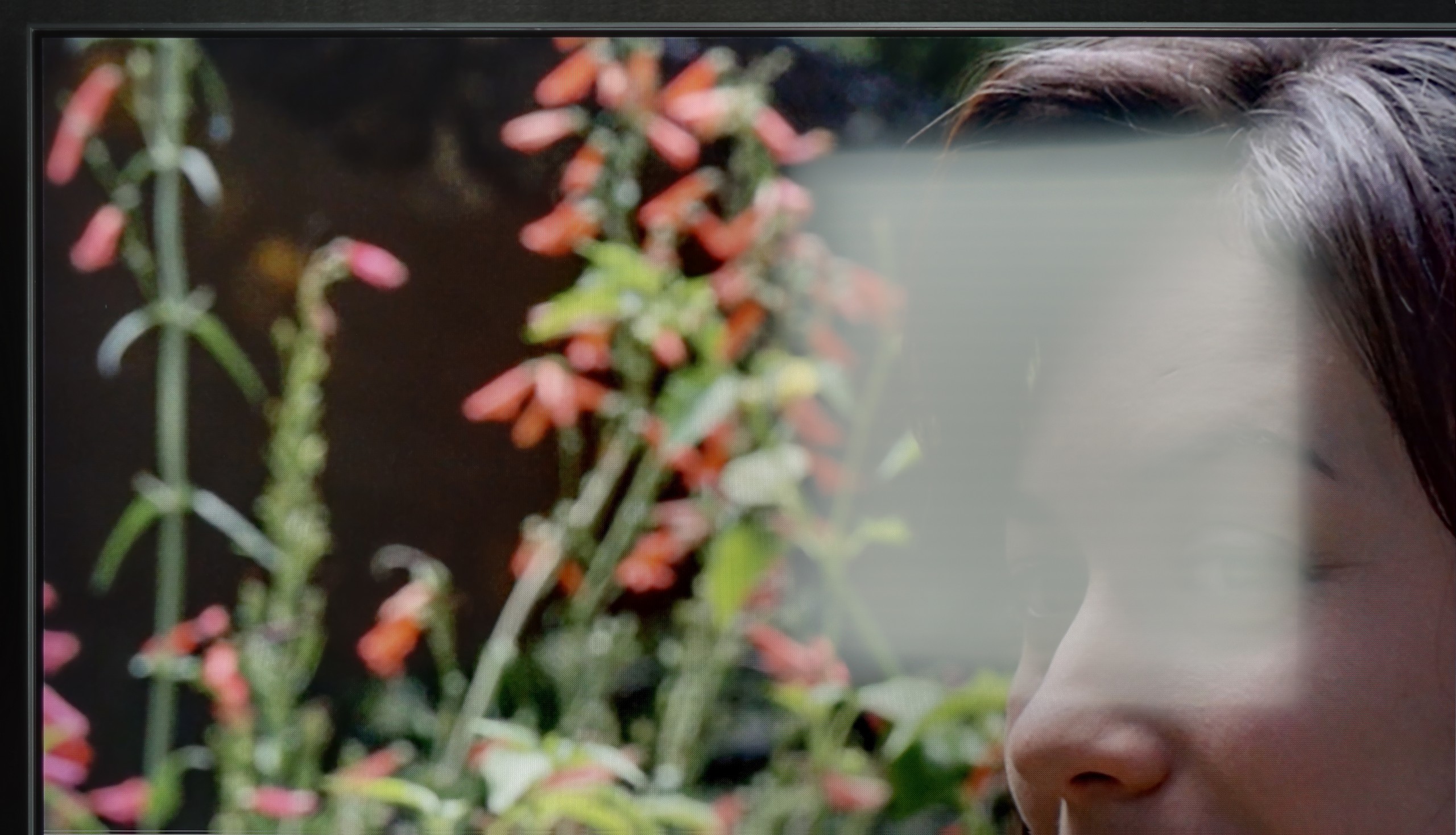
Matrix brightness
Average luminance SDR
Samsung Q8F: 430 cd/m2
Samsung The Frame 2025 (LS03F): 596 cd/m2
One of the most distinctive features of The Frame is its matte display – and it must be said that Samsung has really perfected this aspect. From our experience, it's one of the best solutions for reducing reflections, especially direct ones. If reflections on the screen can be irritating, it will be hard to find a better screen in this budget than the matte panel used in Samsung TVs. Of course, this comes with a certain compromise. In very bright sunlight, colours may appear slightly faded, and the image loses a bit of depth. However, this is something we consciously accept when opting for a matte screen – you win some, you lose some. In practice, the colours and contrast on Samsung's matte screen still outperform those on Chinese models such as TCL NXT Vision or Hisense Canvas TV. If effective reduction of reflections is a priority and you want to use the TV also as a “digital artwork” in bright rooms, it’s hard to make a better choice.
The Frame achieves around 600 nits of brightness, which, combined with the matte coating, ensures that the TV performs well in well-lit daytime conditions. It may not be at the level of flagship models, but in everyday use – in a living room with plenty of light – it handles it without any problems.
The Q8F performs quite well during the day. Its brightness hovers around 450 nits, which proves to be a sufficient level for moderately bright living rooms. It's not a TV that will win a battle against sunlight streaming directly through the window, but in typical home conditions, the picture remains clear and appealing. A big plus is the satin finish of the panel, which effectively reduces light reflections and helps maintain colour saturation even when the room is bright. This makes watching series during the day or evening sports broadcasts with the lights on no problem. The Q8F doesn't aspire to be a cinema TV in full sunlight, but as a daily screen in normal home conditions, it performs really well.
Details about the matrix
Subpixel Structure:

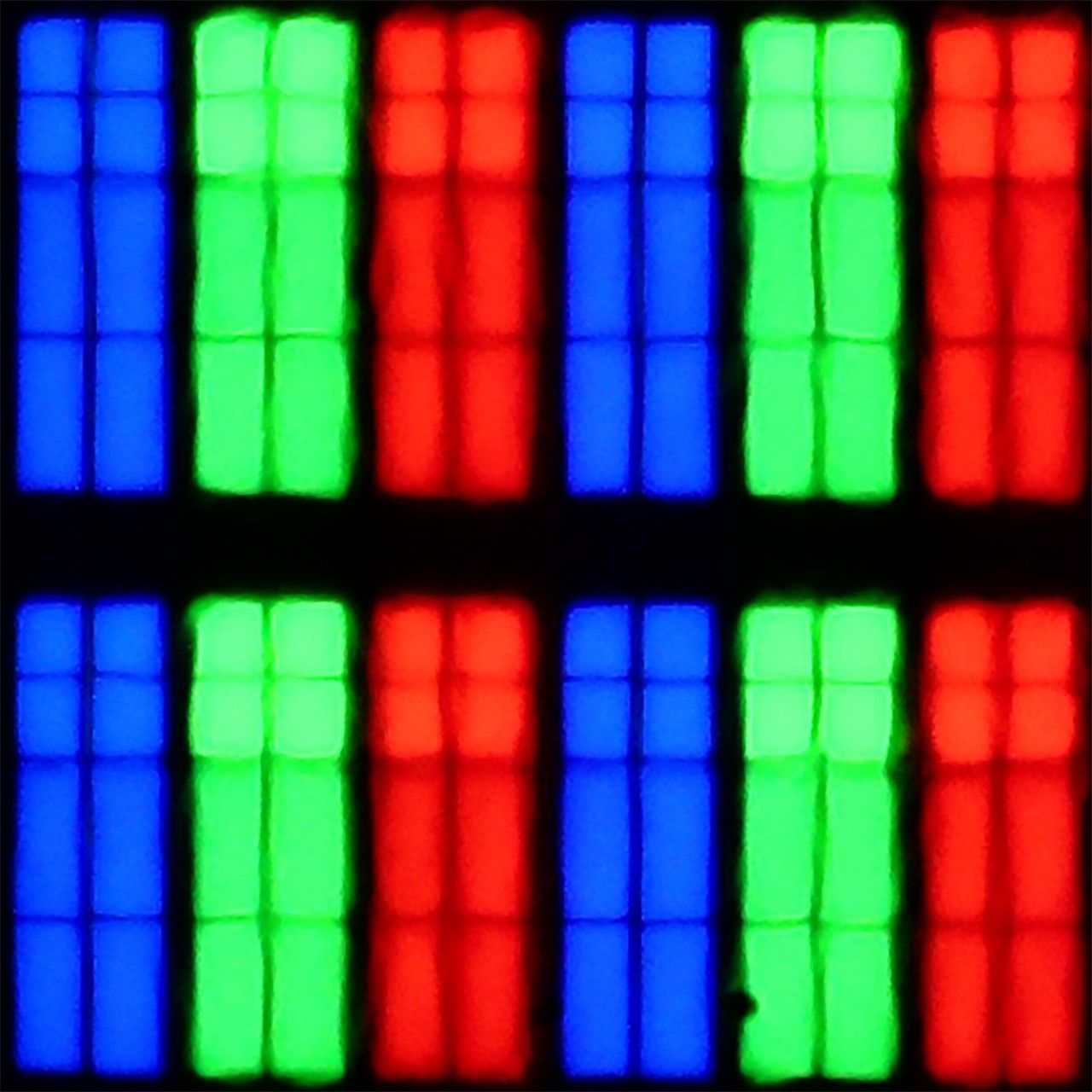
Panel uniformity and thermal imaging:

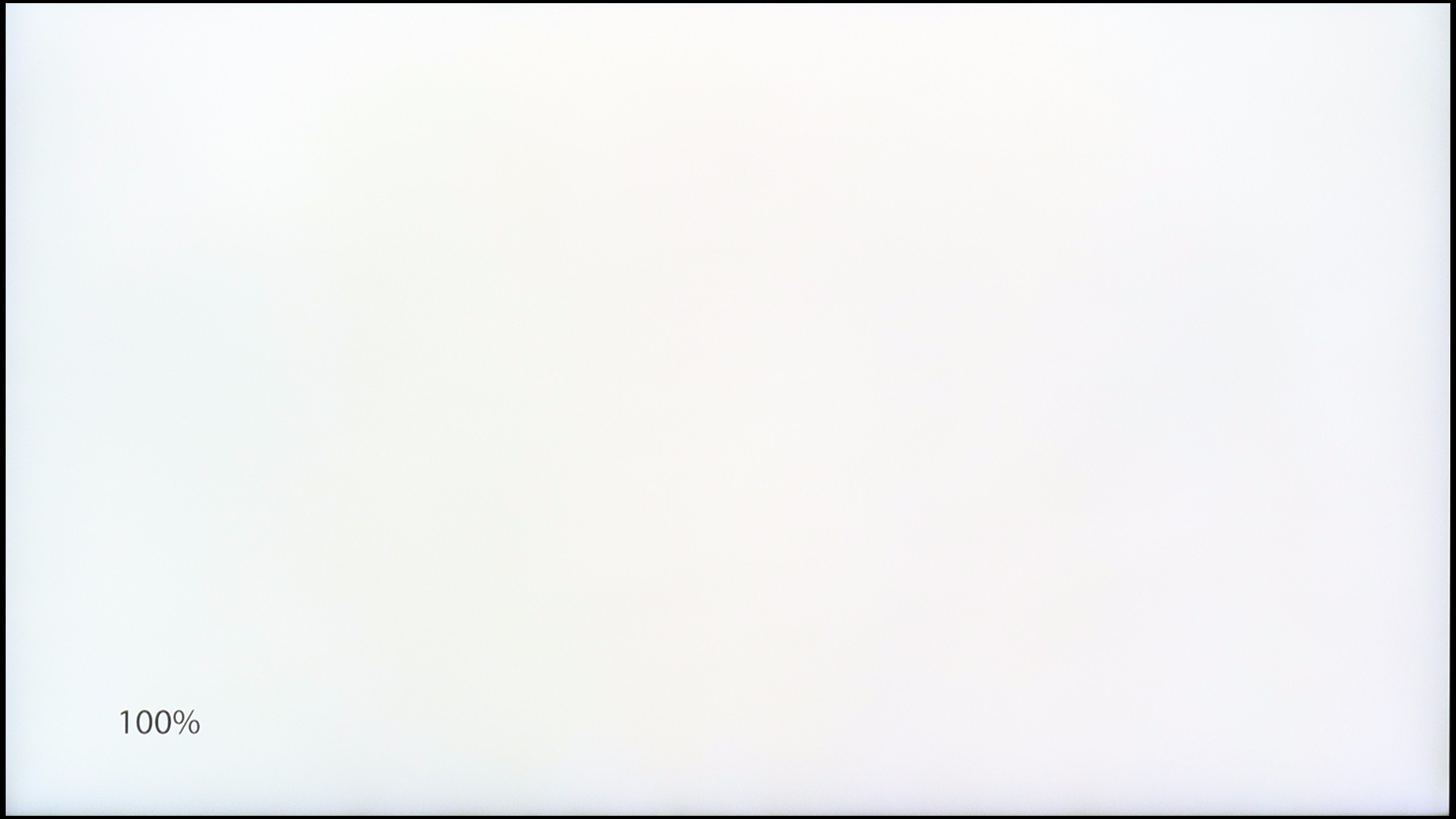
Samsung The Frame 2025 (LS03F)
Samsung Q8F
TV features
7.2/10
7.3/10
- HDMI inputs3 x HDMI 2.0, 1 x HDMI 2.1 40Gbps3 x HDMI 2.0, 0 x HDMI 2.1
- OutputsToslink (Optical audio), eARC (HDMI), ARC (HDMI)Toslink (Optical audio), eARC (HDMI), ARC (HDMI)
- Network InterfacesWi-Fi 2.4GHz, Wi-Fi 5GHzWi-Fi 2.4GHz, Wi-Fi 5GHz, Ethernet (LAN) 100Mbps
- TV receptionDVB-T, DVB-T2, DVB-S, DVB-S2, DVB-CDVB-T, DVB-T2, DVB-S, DVB-S2, DVB-C
Classic features:
- Recording to USB (terrestrial TV)
- Recording programming
- Picture in Picture (PiP)
- RF remote control (no need to aim at the screen)
- Backlit remote control
- Teletext
- Audio only mode
- Bluetooth headphones support
- Simultaneous Bluetooth headphones & TV audio
Smart features:
- AirPlay
- Screen mirroring (Windows Miracast)
- Voice search
- Voice search in native language
- Ability to connect a keyboard and mouse



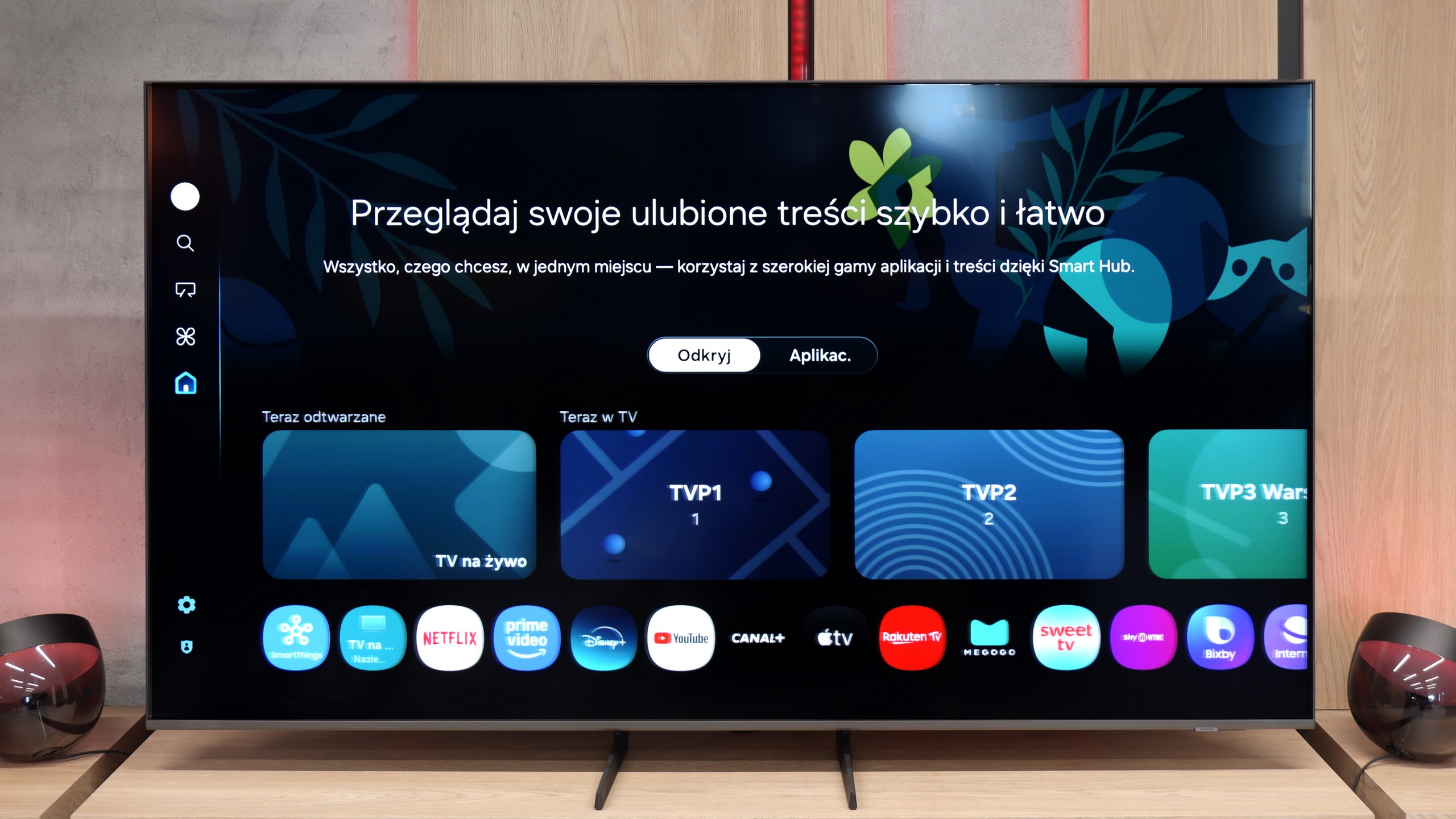
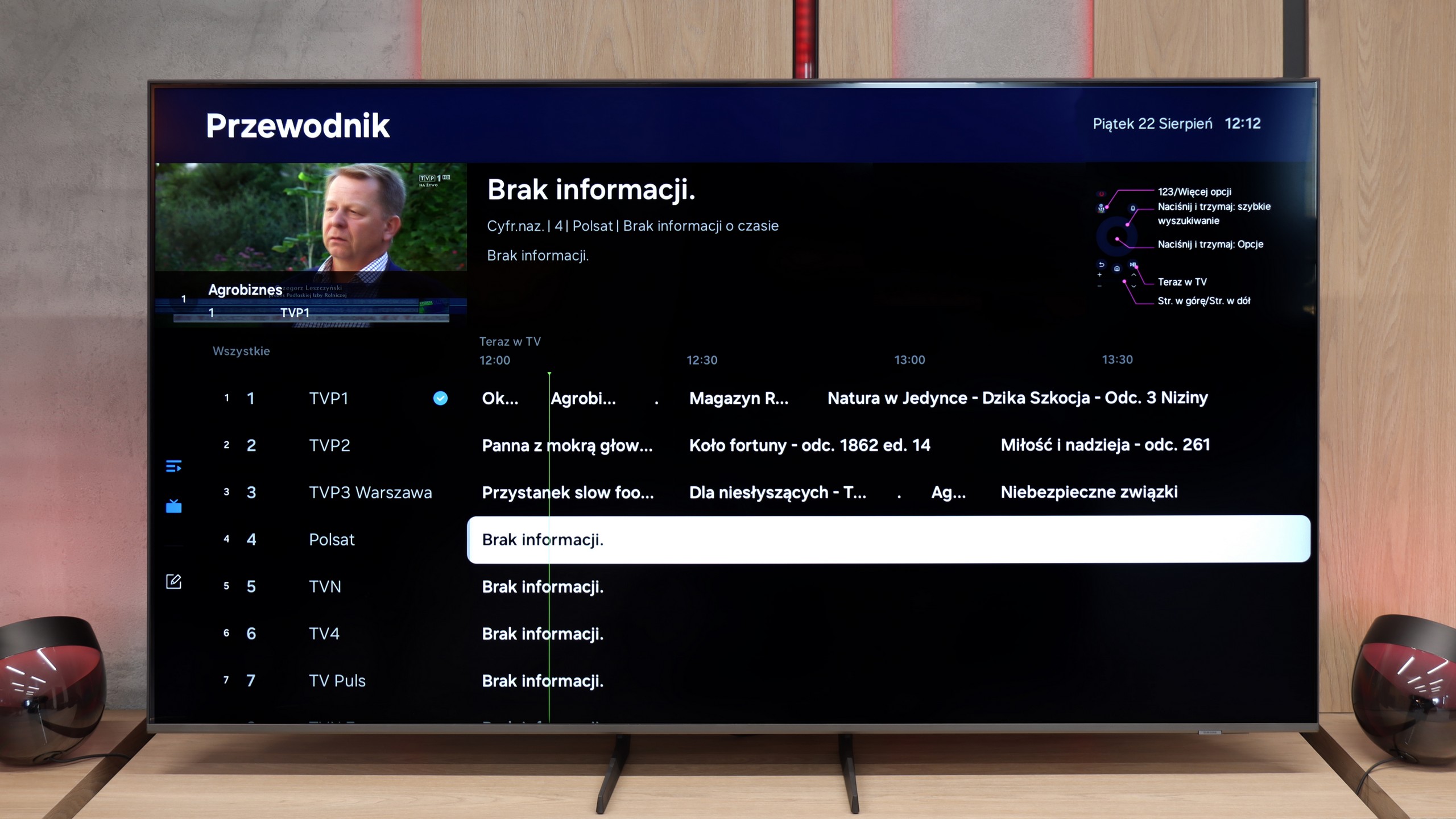
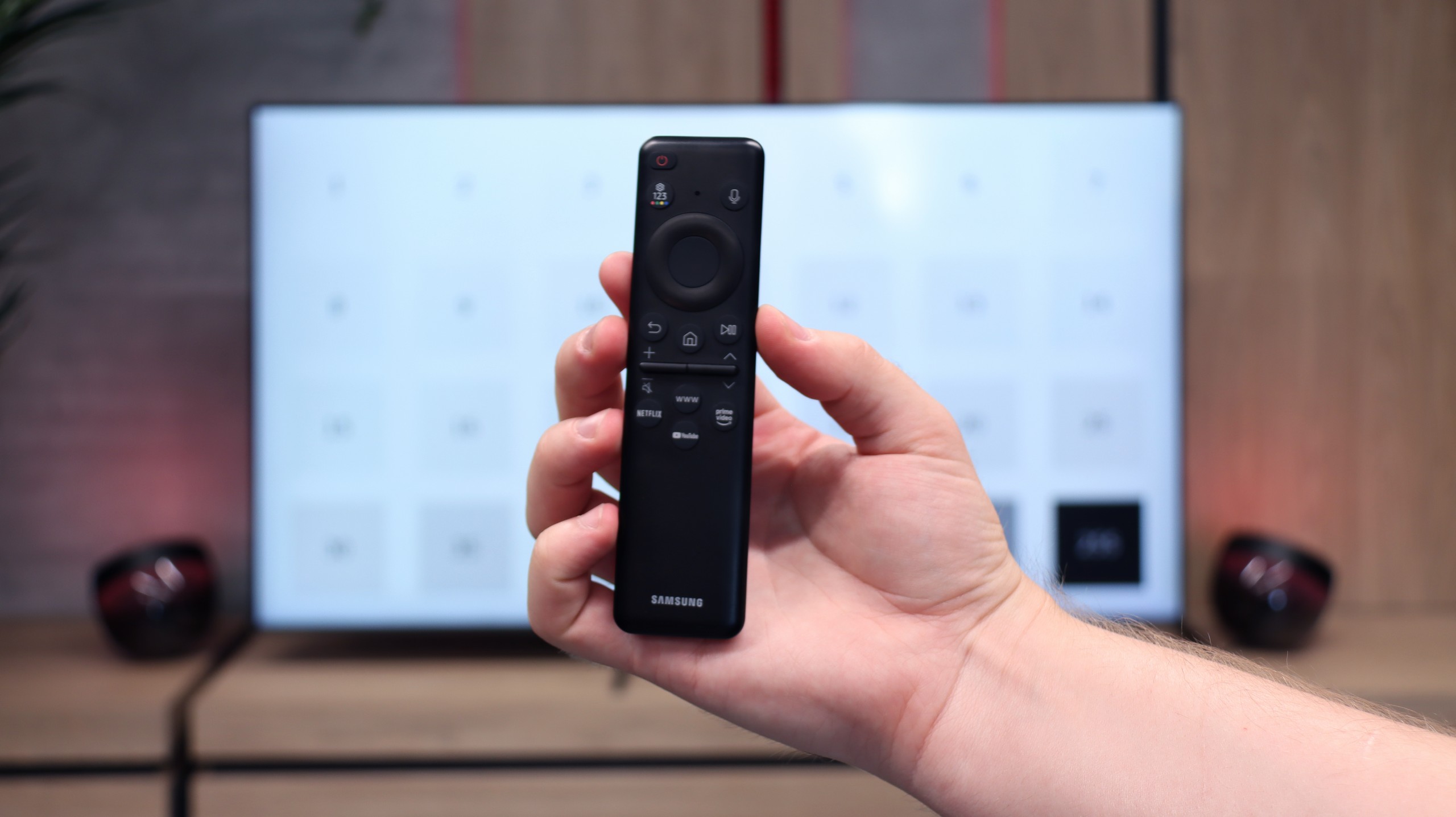

Classic TV Features
In terms of classic features, The Frame doesn’t stand out in any significant way compared to its competitors. There’s no option for USB recording or PiP (picture in picture), which may be disappointing for some users. On the other hand, the TV allows simultaneous use of speakers and headphones, which can be useful – especially for older users. The EPG, or electronic programme guide, is quite readable, and despite the absence of traditional buttons on the remote, we managed to launch even the teletext. In everyday use, the basic functions work smoothly and without major complaints.
Smart System – Tizen and Apps
The Frame 2025 runs on the Tizen system, which has been regarded as one of the most refined Smart TV solutions on the market for years. It’s a system designed for devices that are more than just a television – and it has been designed with this spirit in mind. Tizen offers full integration with external devices – supporting both Apple AirPlay and Miracast. Thanks to the SmartThings app, it’s possible to control not only the television but also other devices within the smart home framework. Since last year, Samsung has also been developing its own voice assistant with support for the Polish language, which significantly facilitates operation. However, the greatest strength of the Smart system in The Frame remains the Art Gallery app. Although access to it is paid (via subscription), it offers the best art scans on the market – we’re talking about scans, not just ordinary photos. This makes the effect of a digital painting hanging on the wall appear significantly better than in any other lifestyle TV.
SmartTV Features: Tizen
In terms of smart features, the Q8F is right up there with what Samsung has made us accustomed to. It comes with the Tizen system – fast, intuitive, and well integrated with other devices. AirPlay, screen mirroring, and simple voice commands work seamlessly, so the basics are ticked off perfectly. Added to this is SmartThings, an app that turns the TV into the hub of a home ecosystem. You can connect a washing machine, vacuum cleaner, light bulbs, or speakers and control everything from one place, including the TV. There are also plenty of apps in Tizen for watching movies and series – Netflix, YouTube, Disney+, and Prime Video are all readily available. However, it should be noted that Tizen is a closed system, so if someone is hoping to install less popular programs, they might be disappointed.
Traditional Television
Traditional television falls short. The Q8F simply serves as a screen here – it will display the picture, but additional features like USB recording or PiP mode are absent. The remote is small and very minimalist. It looks modern and can be charged via solar batteries on the back cover or through USB-C, but it's worth noting that it might not suit everyone – particularly older users may miss traditional buttons. However, it's fair to say that Samsung has been consistently steering its TVs (and competitors who are copying some of their ideas) towards the smart home direction rather than towards devices "for grandma and grandpa". Given the enormous popularity of the brand, one can assume that most users, even the older ones, have already gotten used to the fact that the era of remotes with a whole range of rubber buttons is slowly coming to an end.
Playing files from USB
9.1/10
9.1/10
Supported photo formats:
Maximum photo resolution:

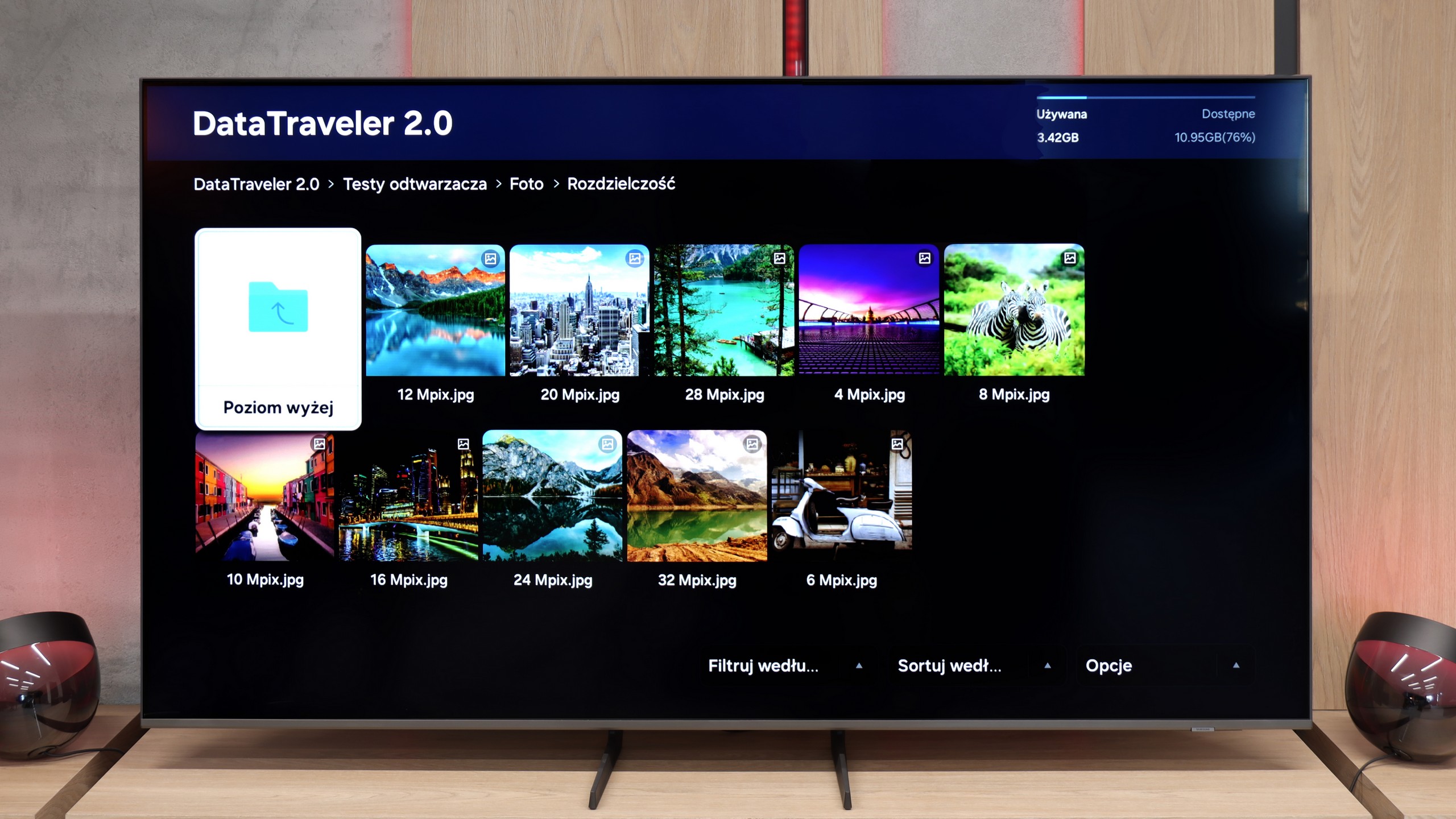
During testing, we didn't notice any major issues with playing files from a USB memory stick. The television handled both video materials and photos well. Of course, there are some exceptions – for example, the lack of support for the HEIC format (used by Apple devices) – but it's hard to consider this surprising. On the positive side, it fully supports high-resolution photos – the television displays high megapixel files without any problems, which can be significant for those wanting to treat The Frame as a digital photo frame as well. However, during testing, we noticed a limitation regarding subtitles – the television only correctly handled files in .txt format. It's worth keeping this in mind and ensuring that downloaded subtitles for films are saved in this format; otherwise, they may simply not display.
Samsung Q8F handles playback of files from USB quite efficiently. It supports almost all popular video formats as well as photos, so you can easily load a holiday movie or a family album. There are occasional exceptions with less popular photo formats, but the essential JPEG works flawlessly, which will be crucial for most users. It's a shame that Tizen doesn't allow the installation of alternative players, such as VLC. Then even less popular formats wouldn't pose any problem.
Apps
8.7/10
8.7/10














































Sound
6/10
6/10
- Maximum volume-84dB
- Dolby Digital Plus 7.1
- Dolby True HD 7.1
- Dolby Atmos in Dolby Digital Plus (JOC)
- Dolby Atmos in Dolby True HD
- DTS:X in DTS-HD MA
- DTS-HD Master Audio
For such a slim television, the sound is quite decent. It’s full, adequate for everyday viewing, but lacks much excitement – typical of flat designs. There's not much bass, although at times it can be heard. The speakers in a 2.0.2 configuration have a total power of 40 W. (in the 55+ inch version) Unfortunately, the television does not support DTS format, so for movies with that sound, you'll need to rely on external equipment, like a home theatre system. You can connect a soundbar, and thanks to the Q-Symphony feature, the television plays along with it. Samsung also offers visually matching models for The Frame like S700D or S800D, but they are sold separately. (This shouldn’t really surprise anyone😉).
The sound on the Q8F can be described as acceptable. You can hear a slightly defined bass, but it's really minimal – the slim design of the television simply doesn't allow the pair of 2 × 10 W speakers to spread their wings. This is a typical scenario for most televisions: if someone cares about truly cinematic experiences, it's worth considering a soundbar. Samsung has a really wide range in this category across different budgets, so it's easy to find something suitable. The television itself is fine for watching traditional TV and series occasionally, but you wouldn't expect much in terms of audio excitement.
Acoustic Measurements
No acoustic data
84dBC (Max)
75dBC


